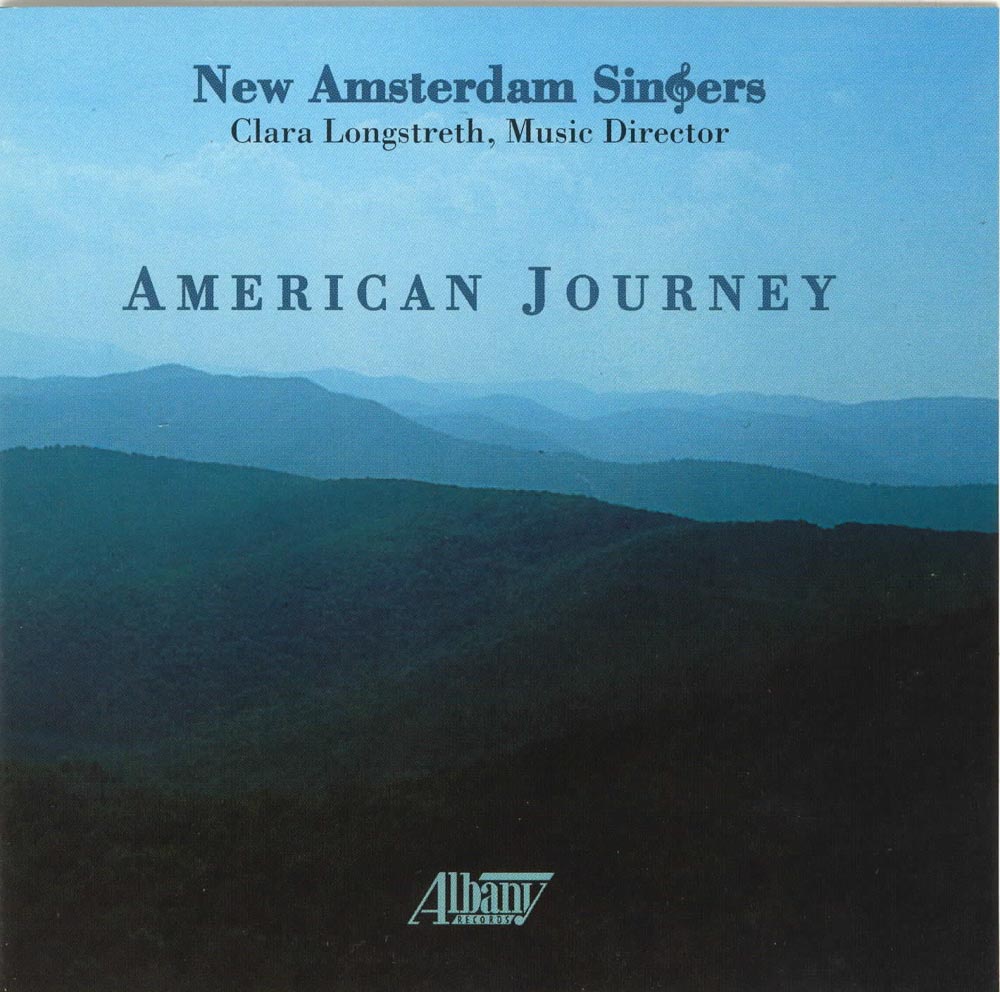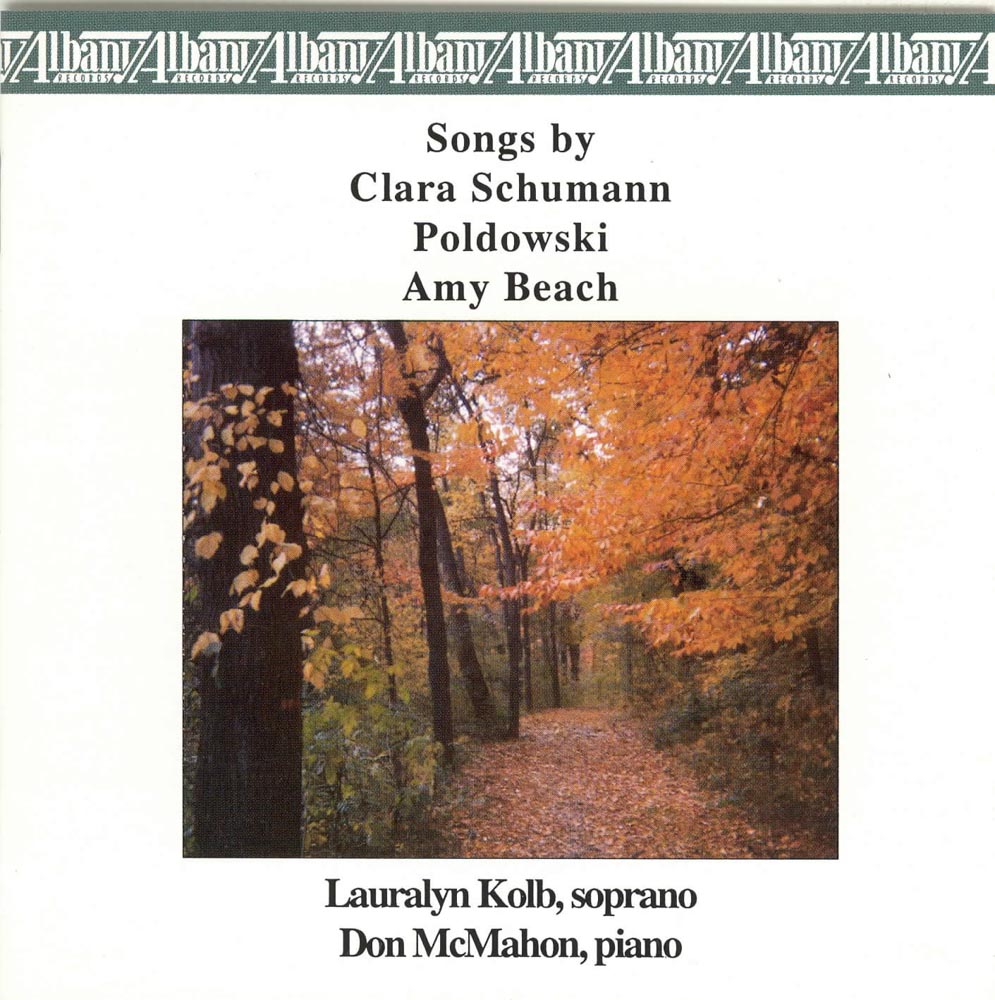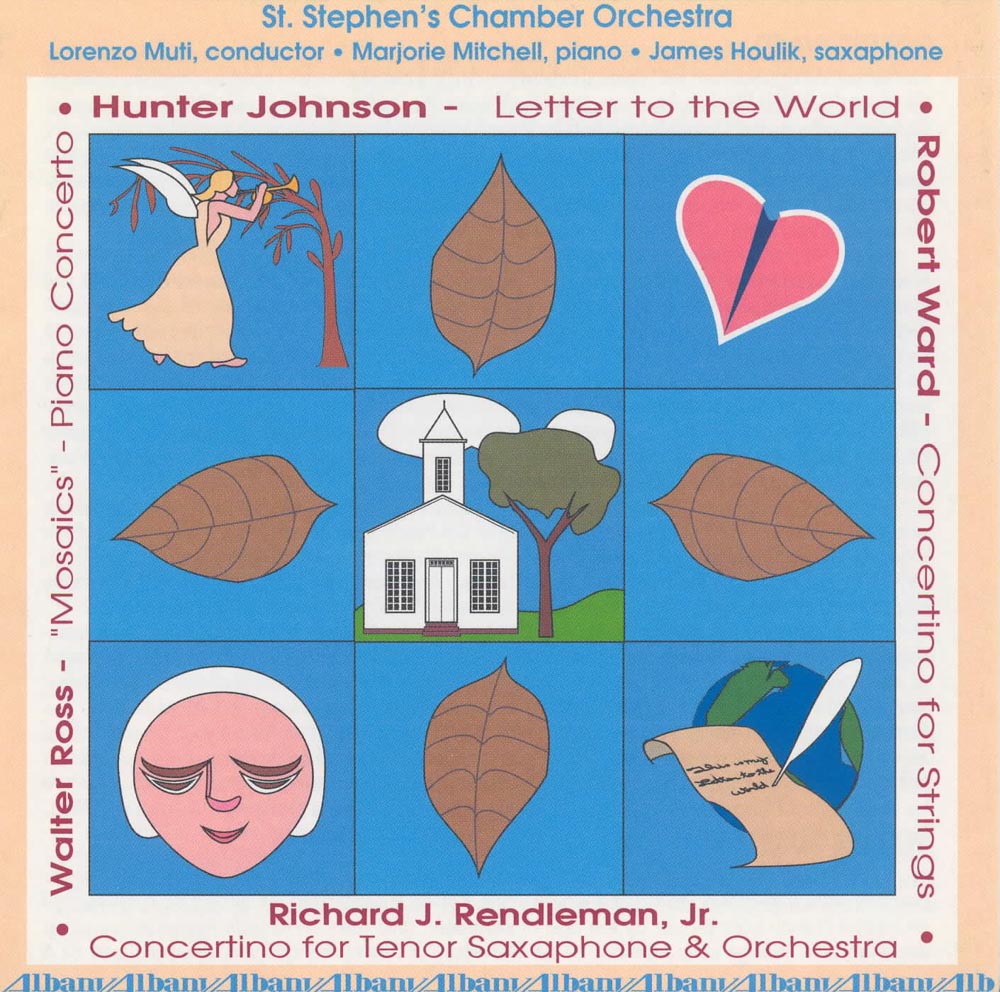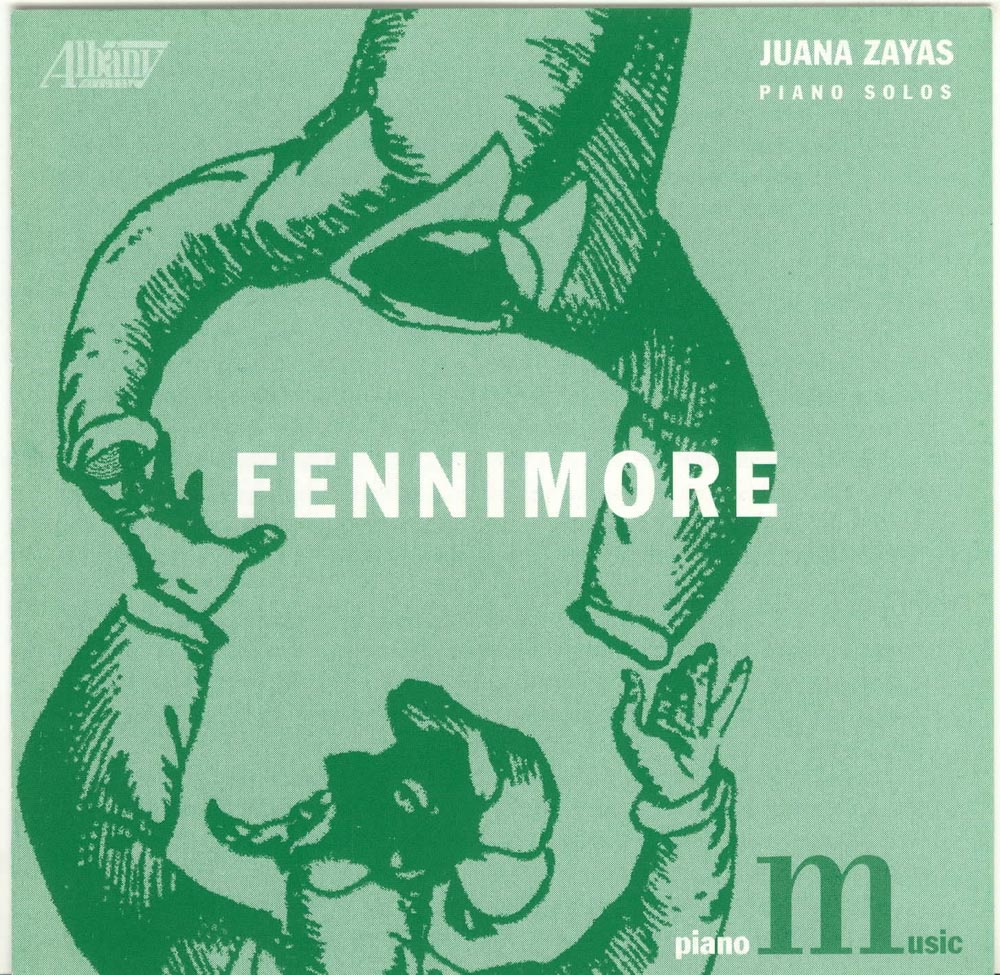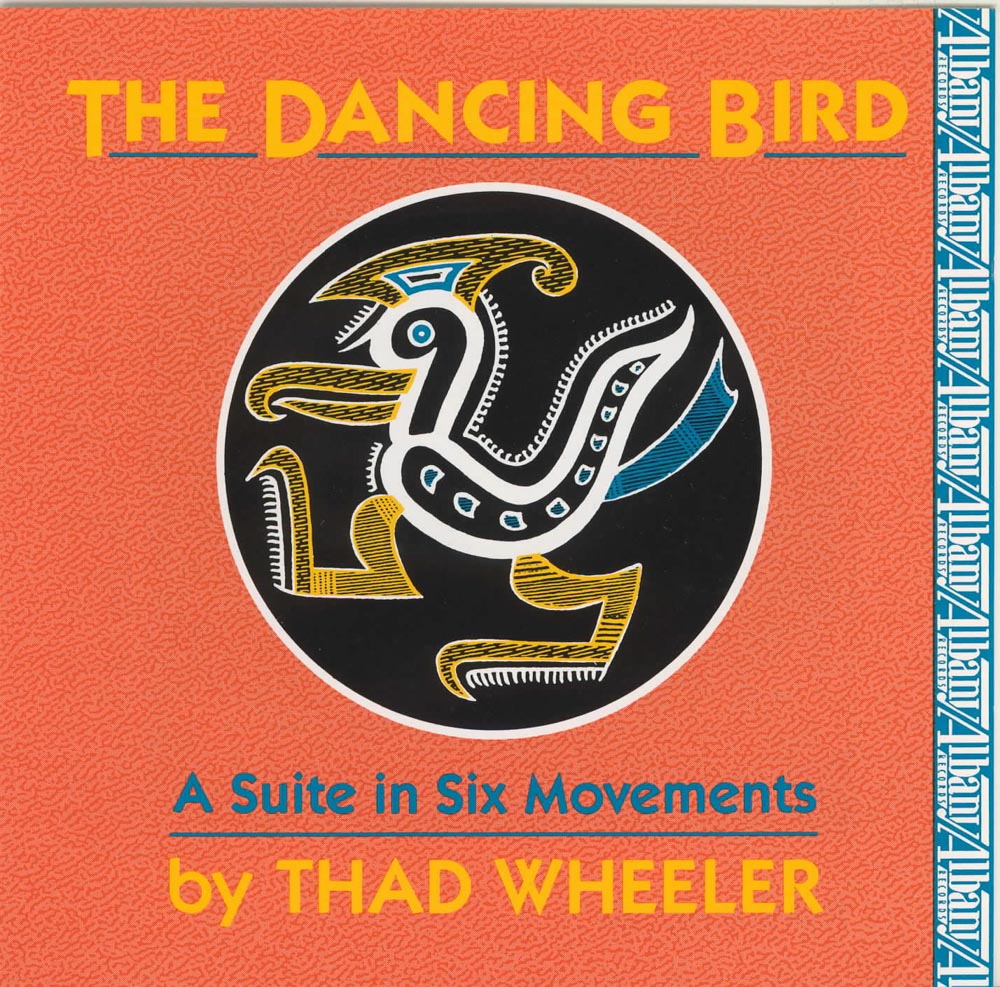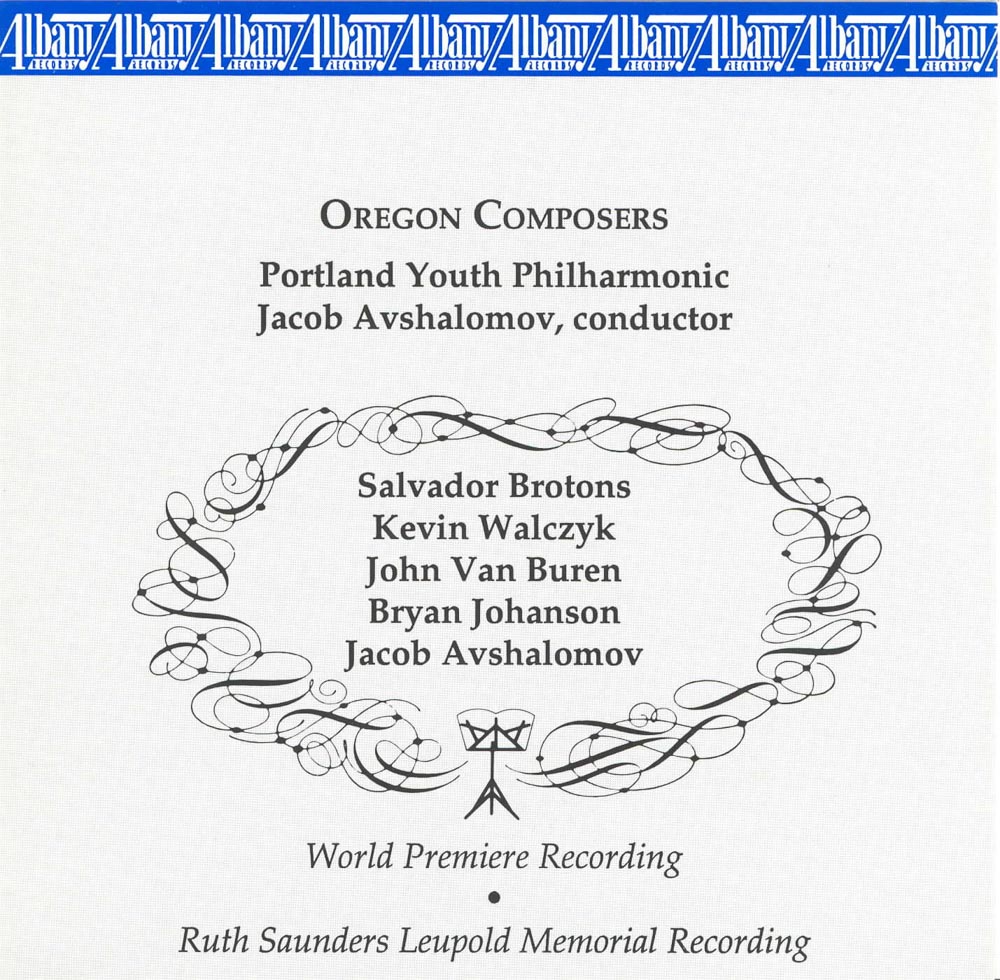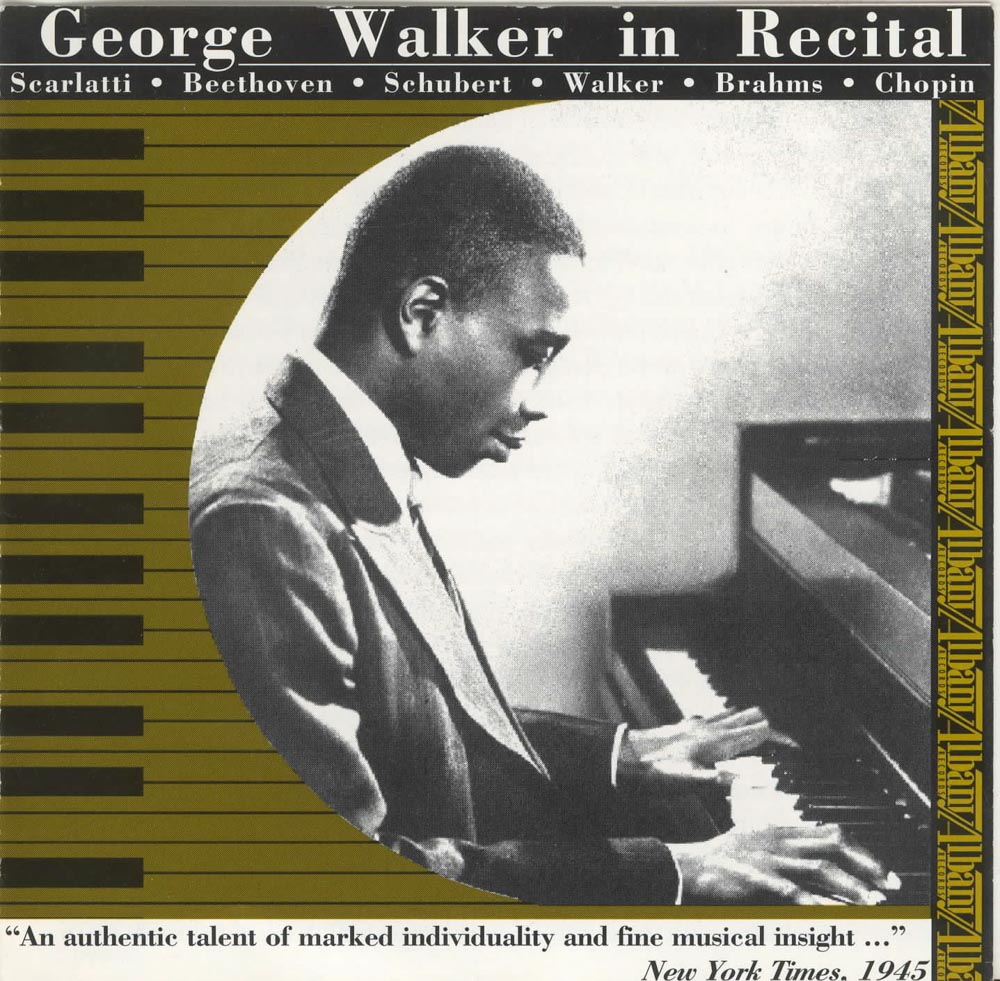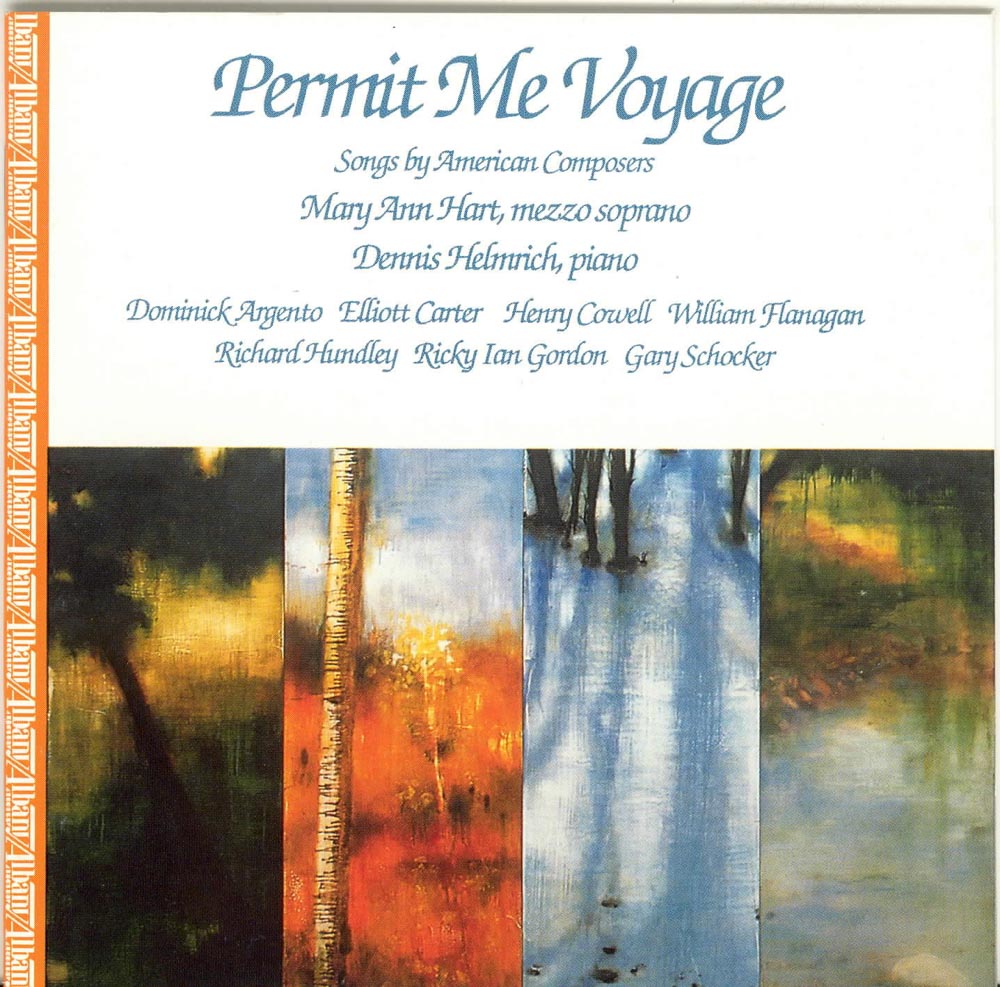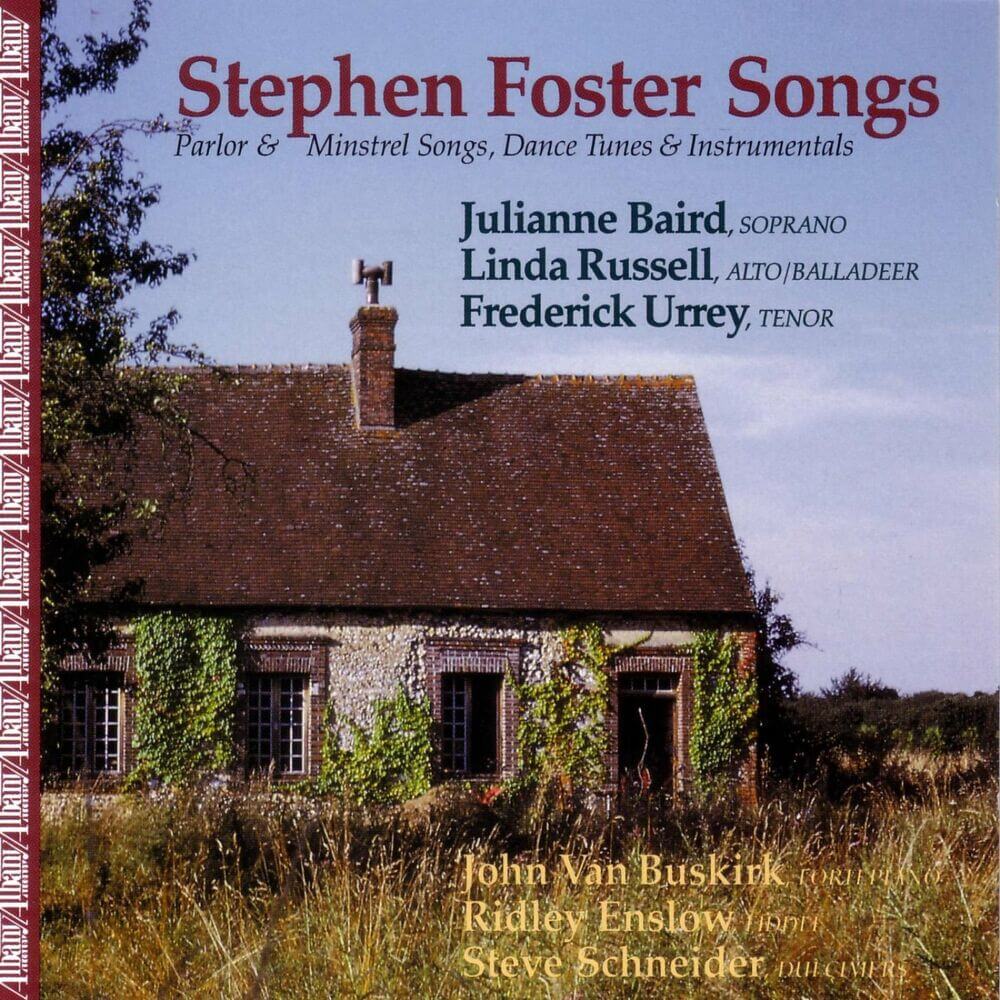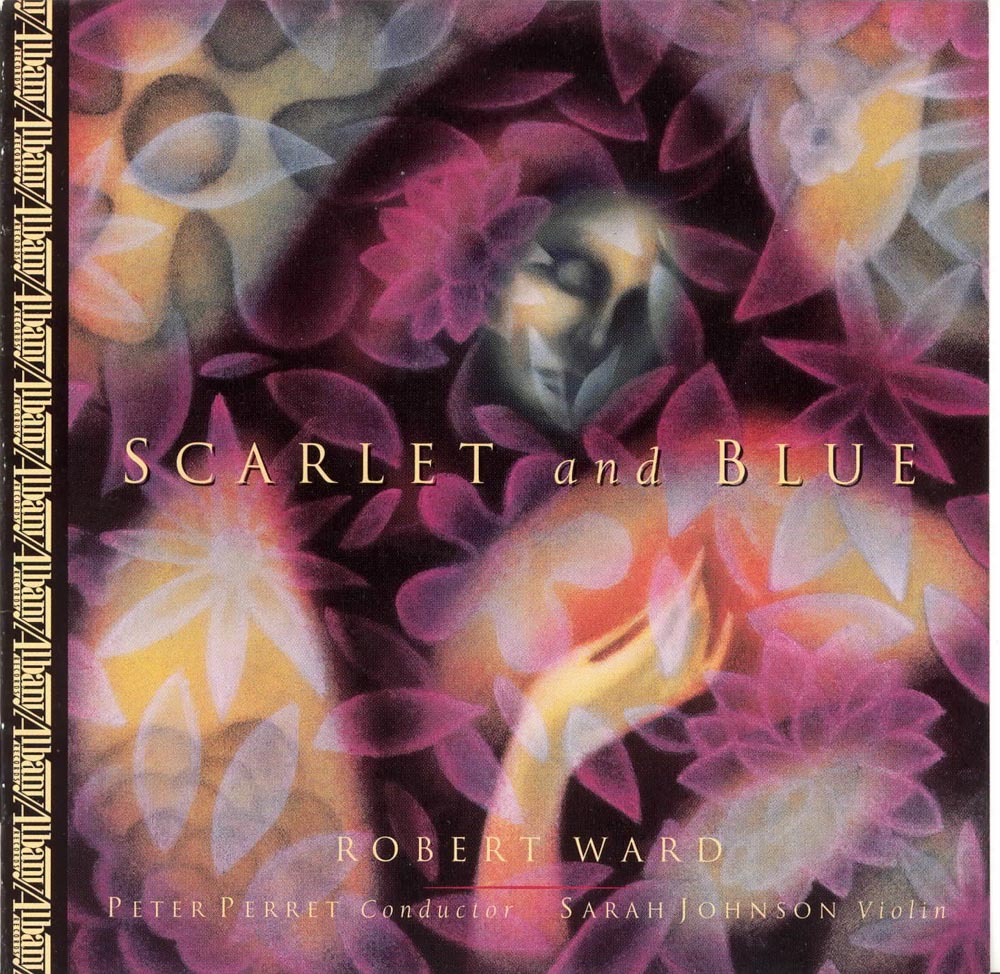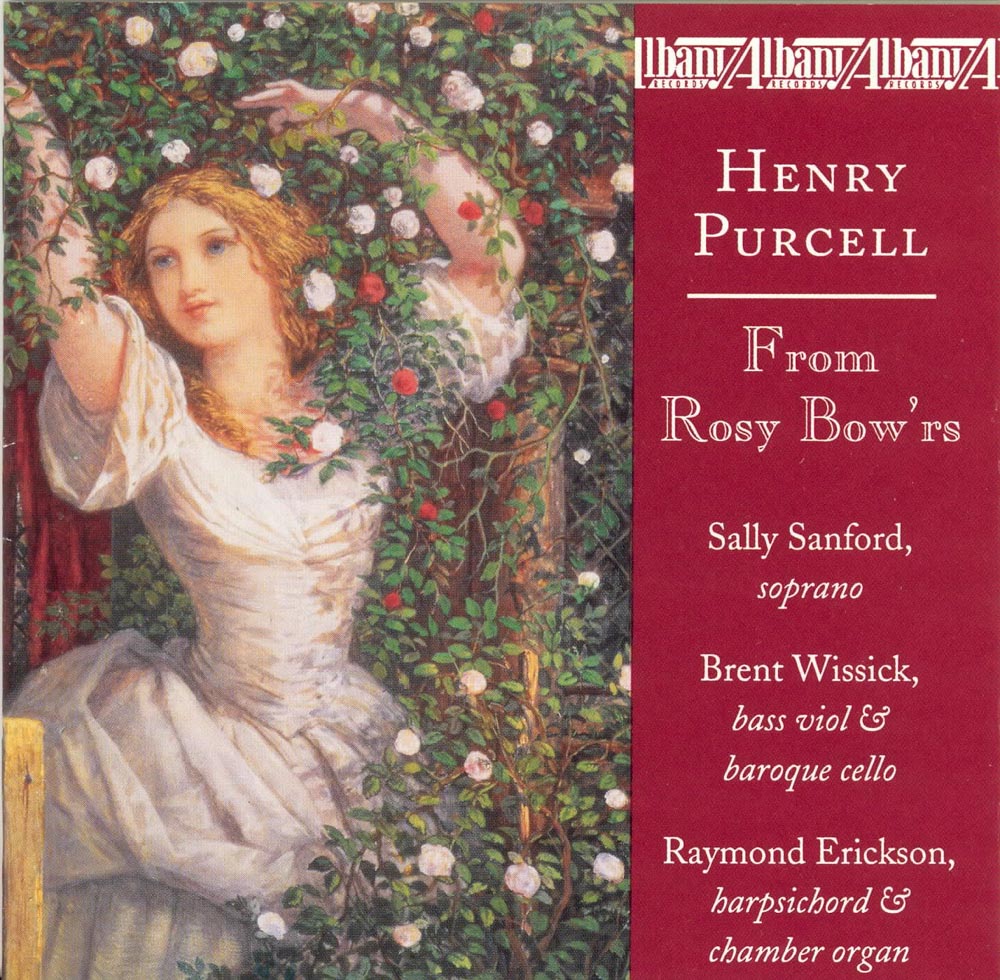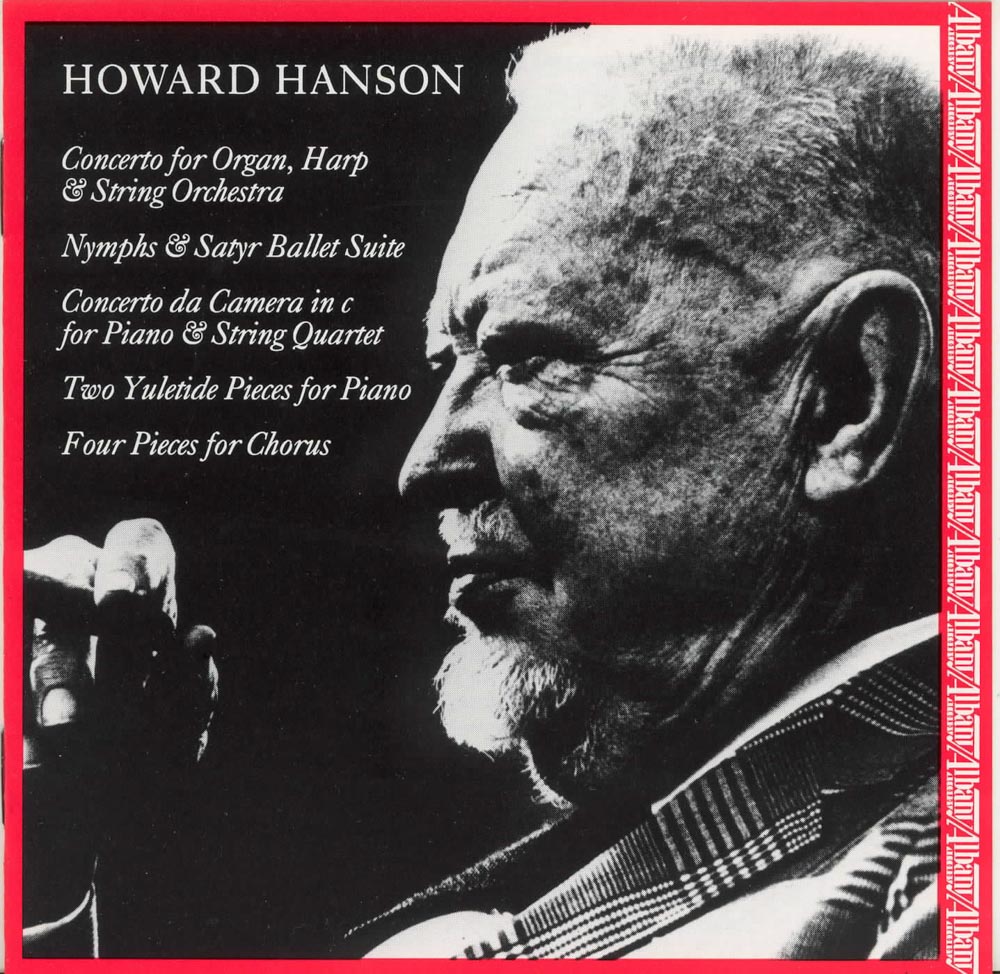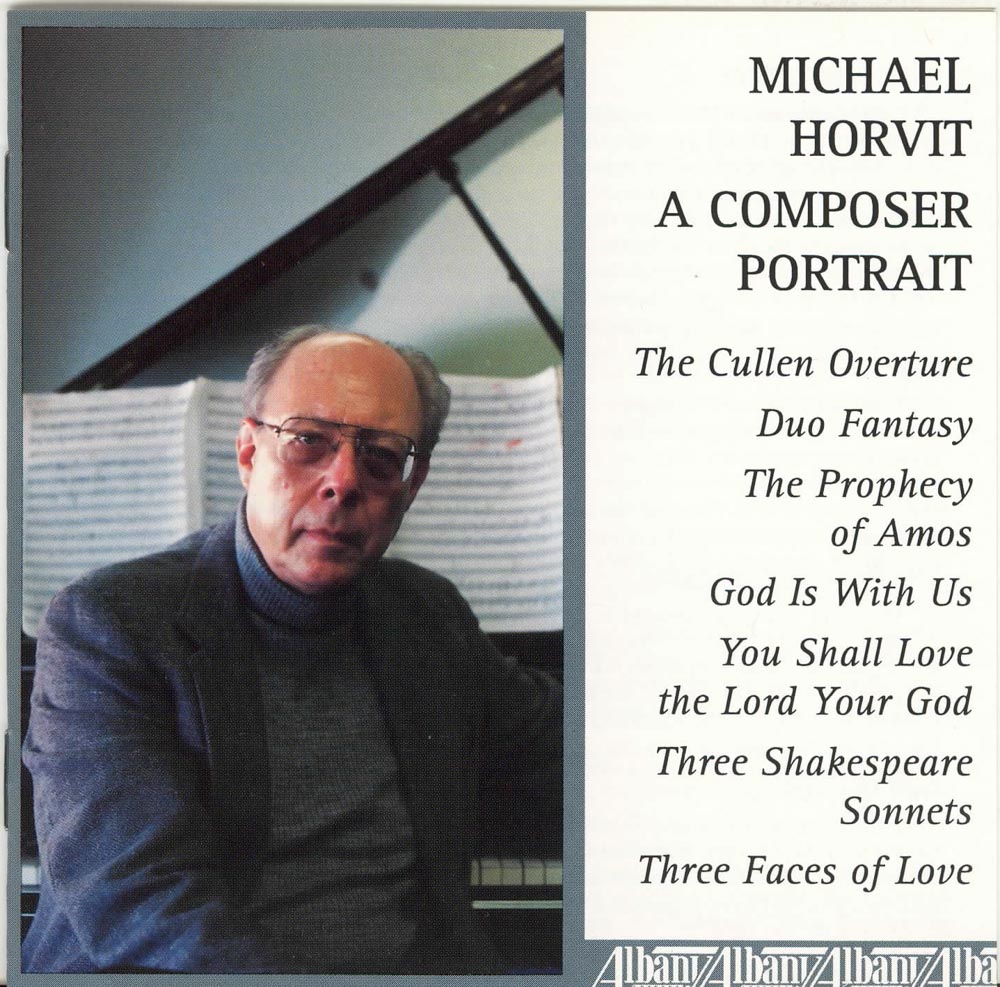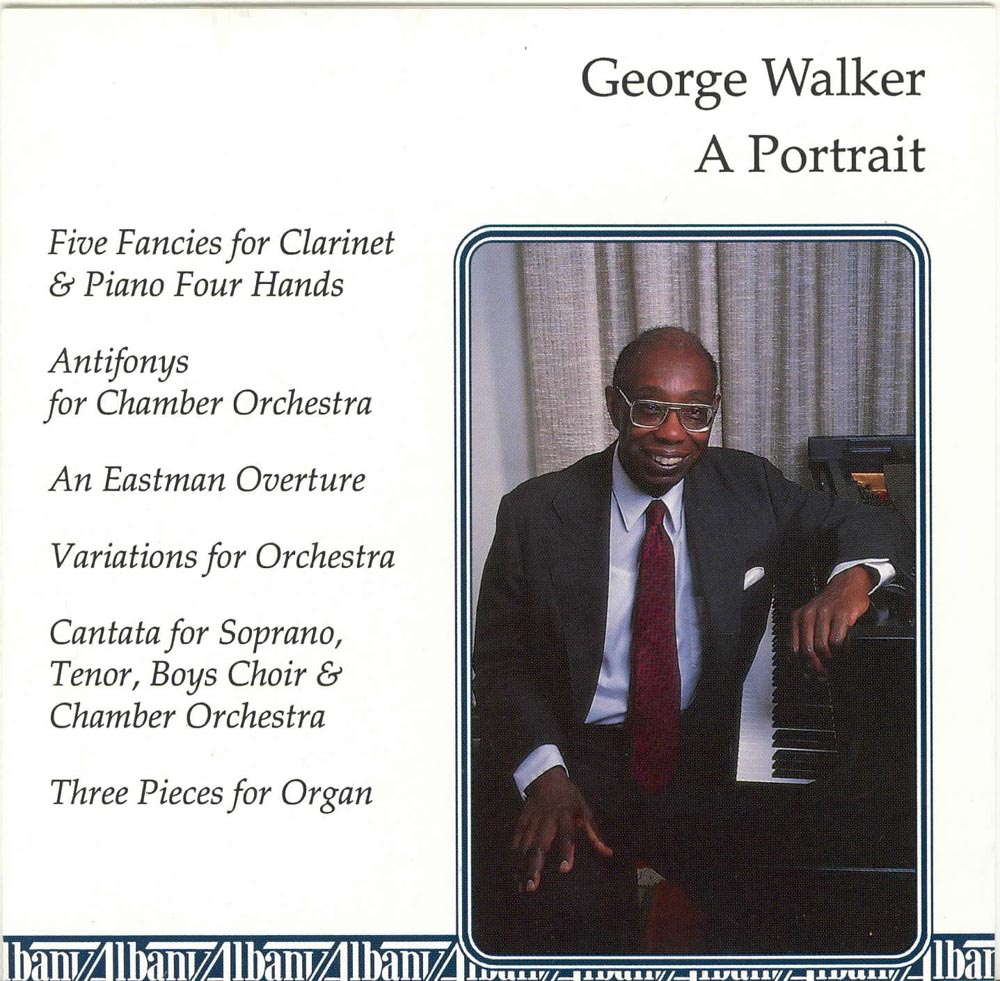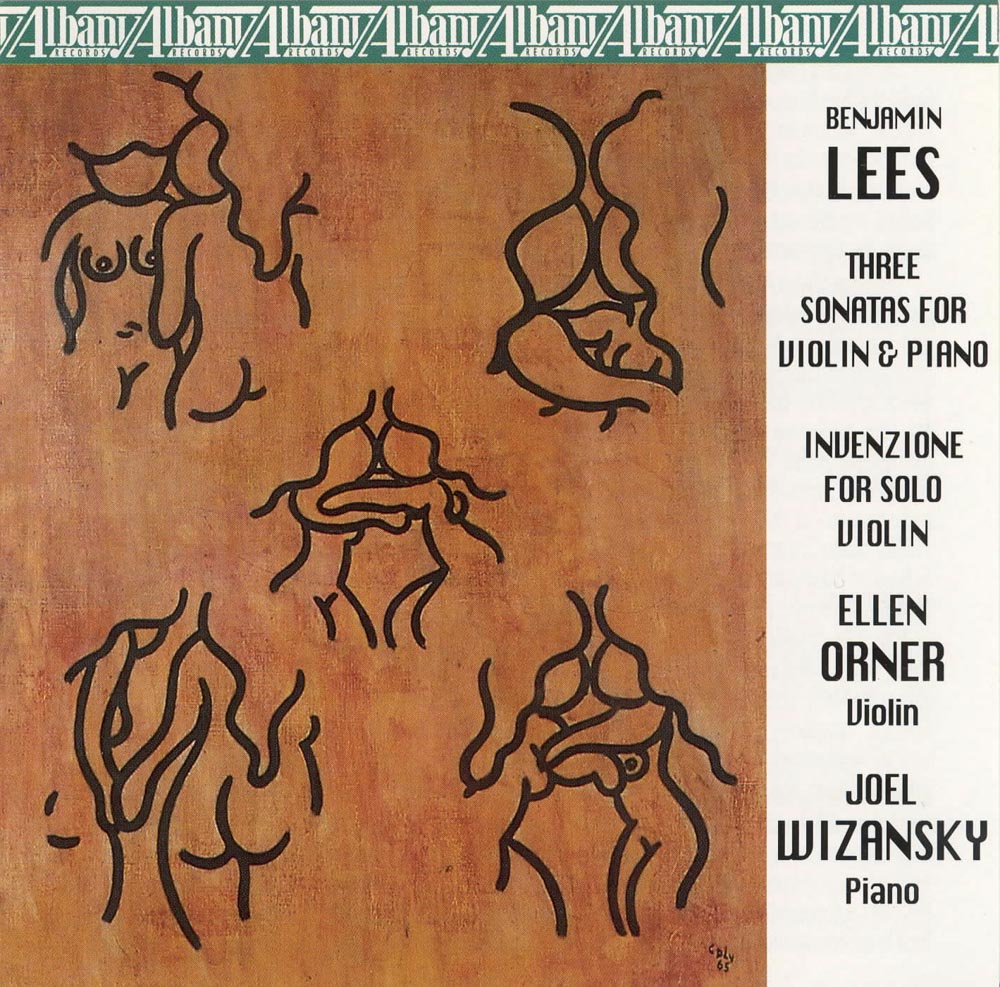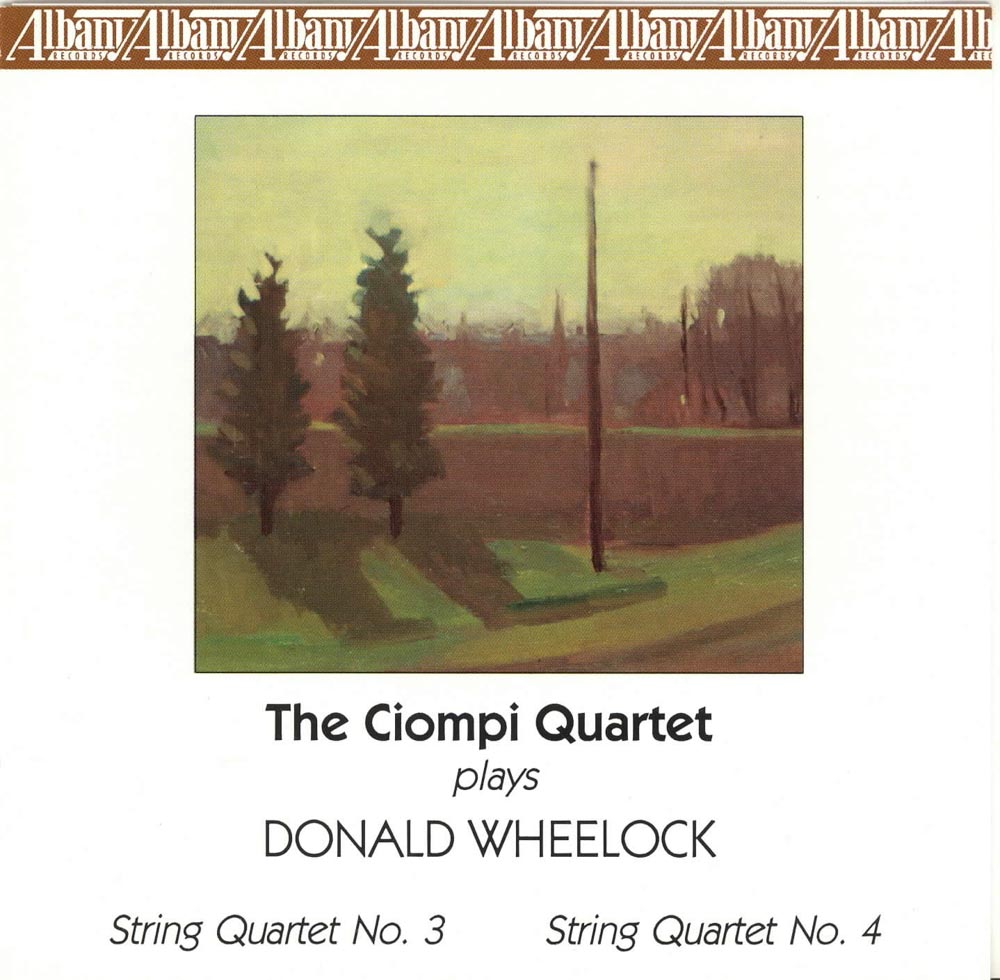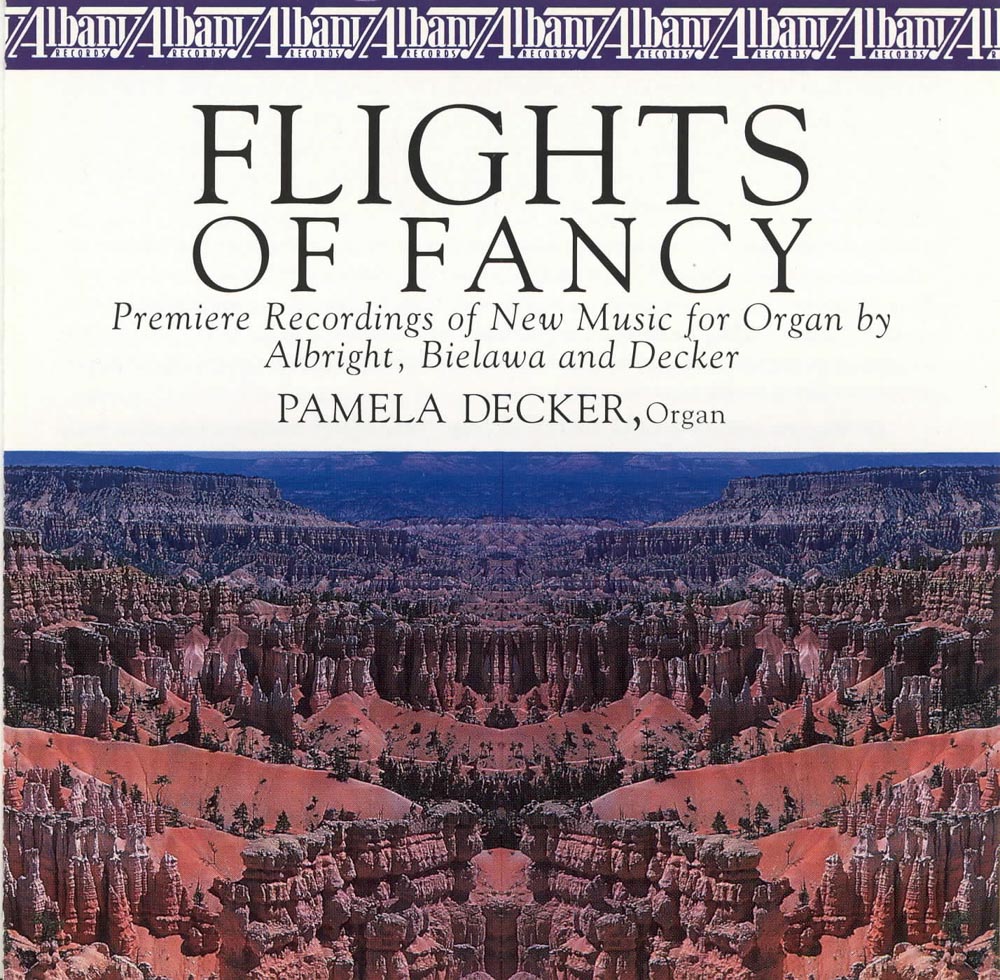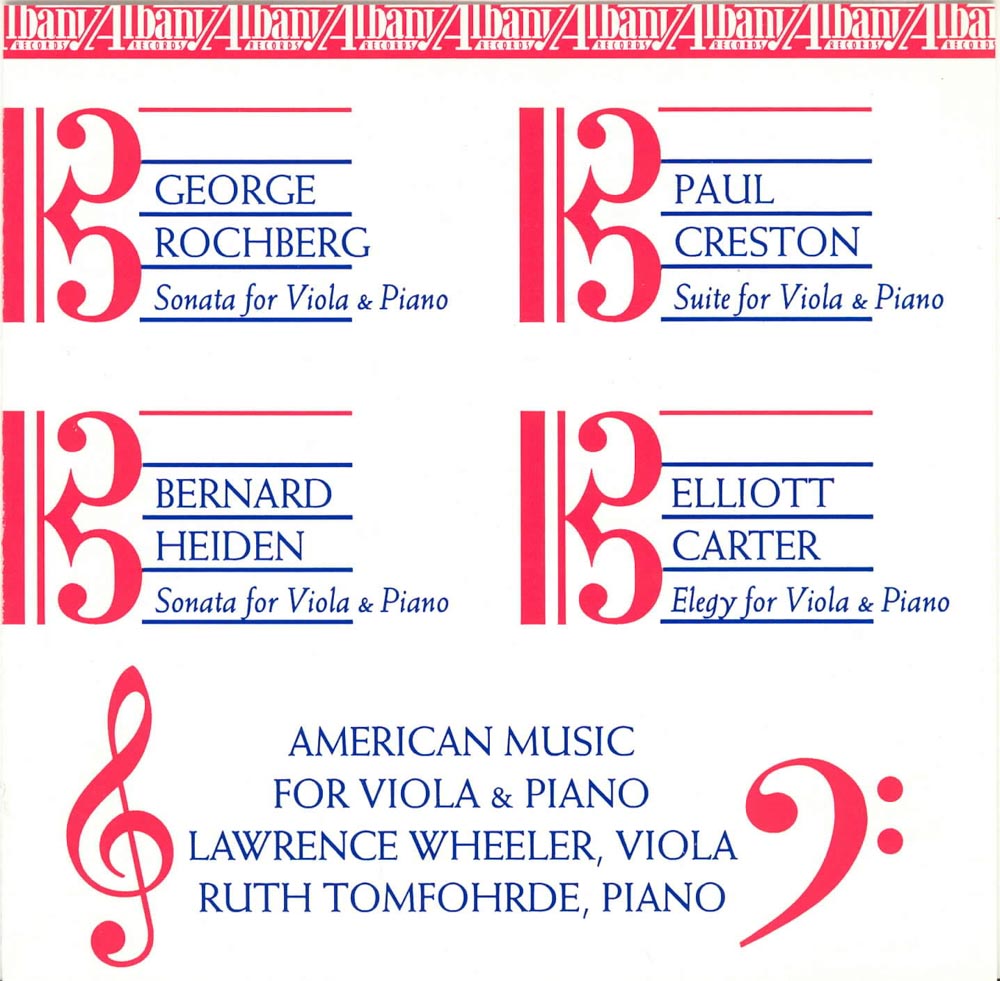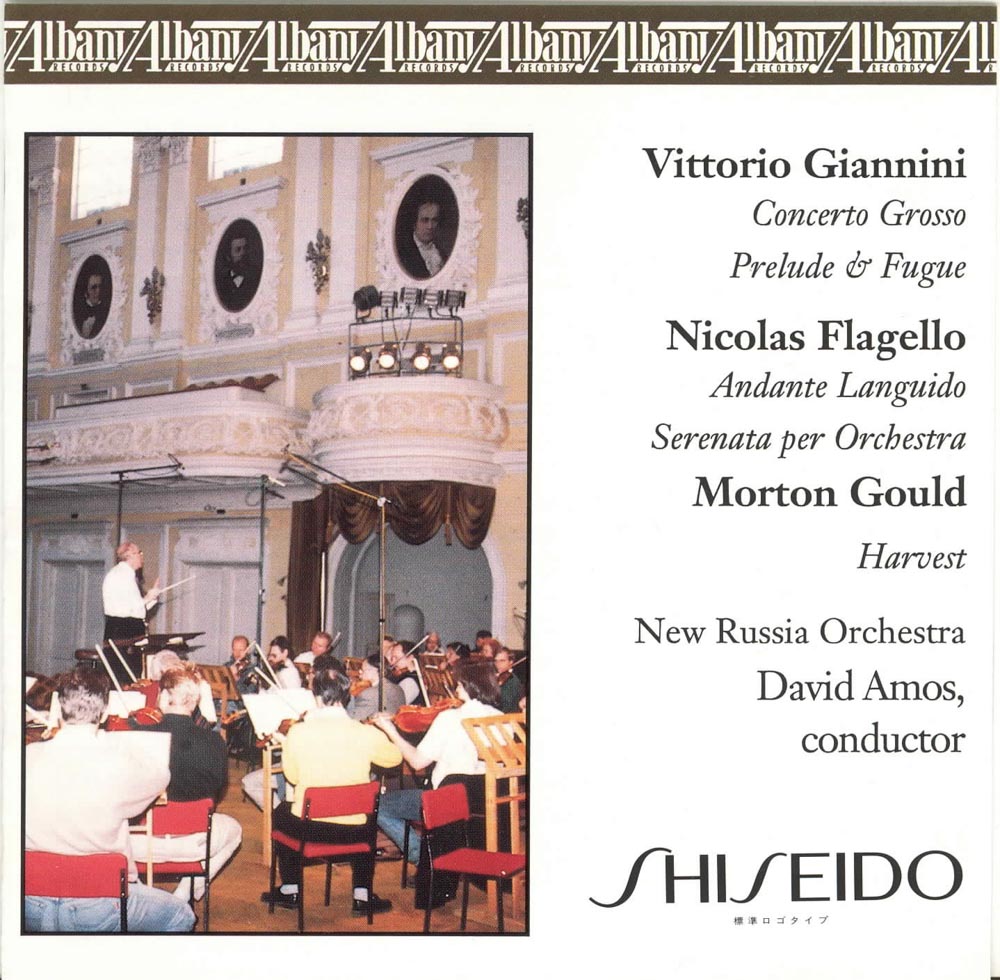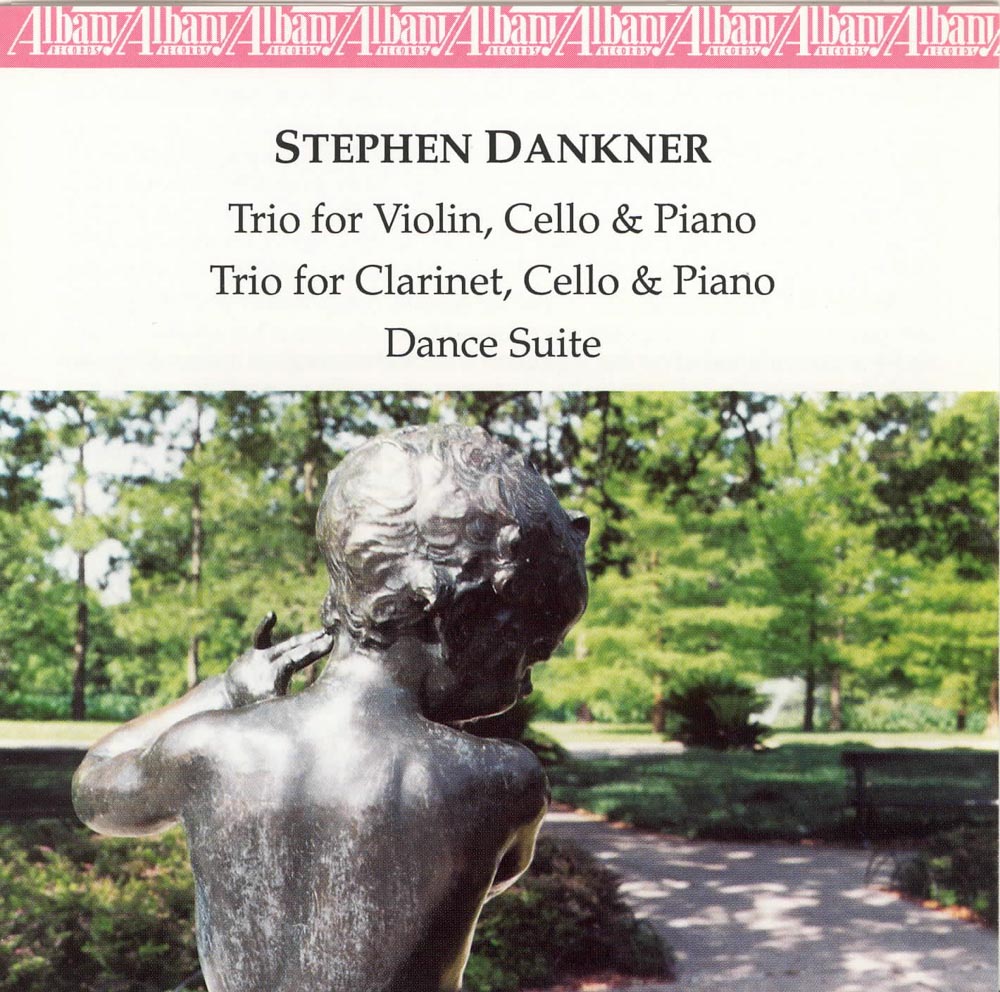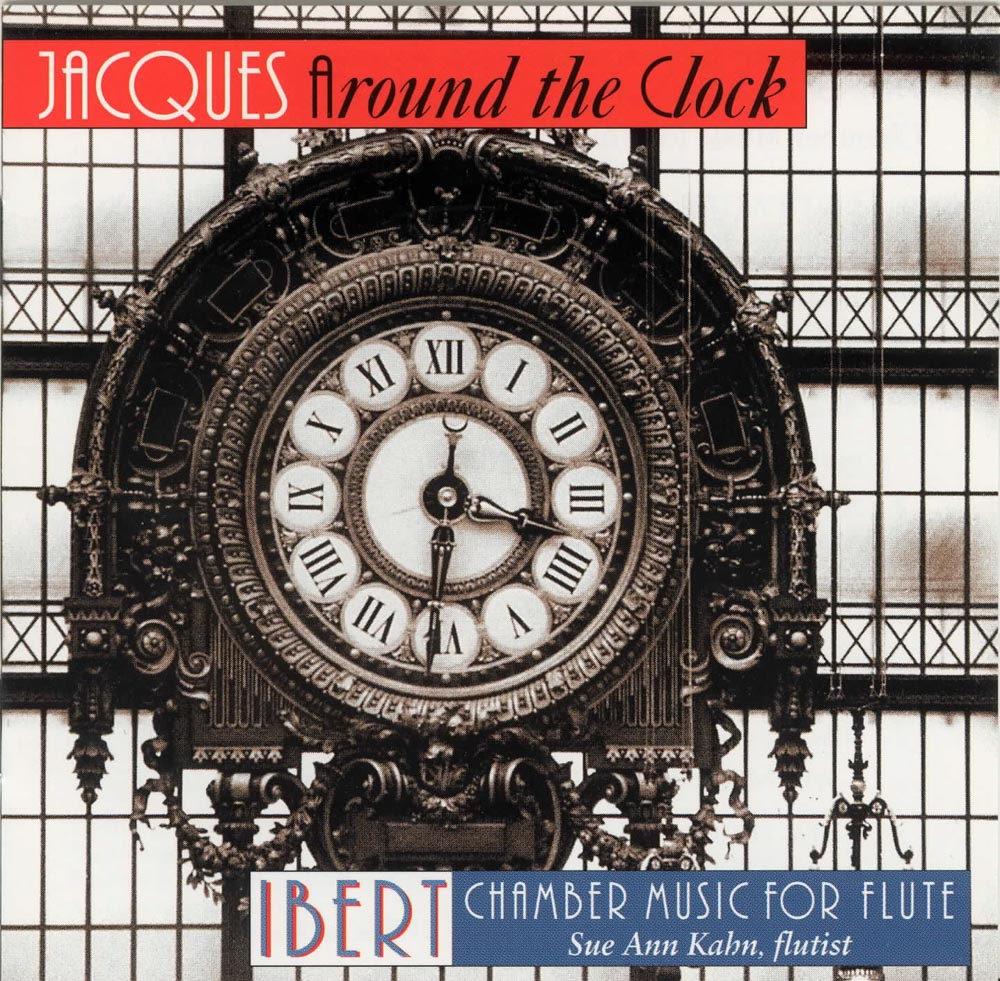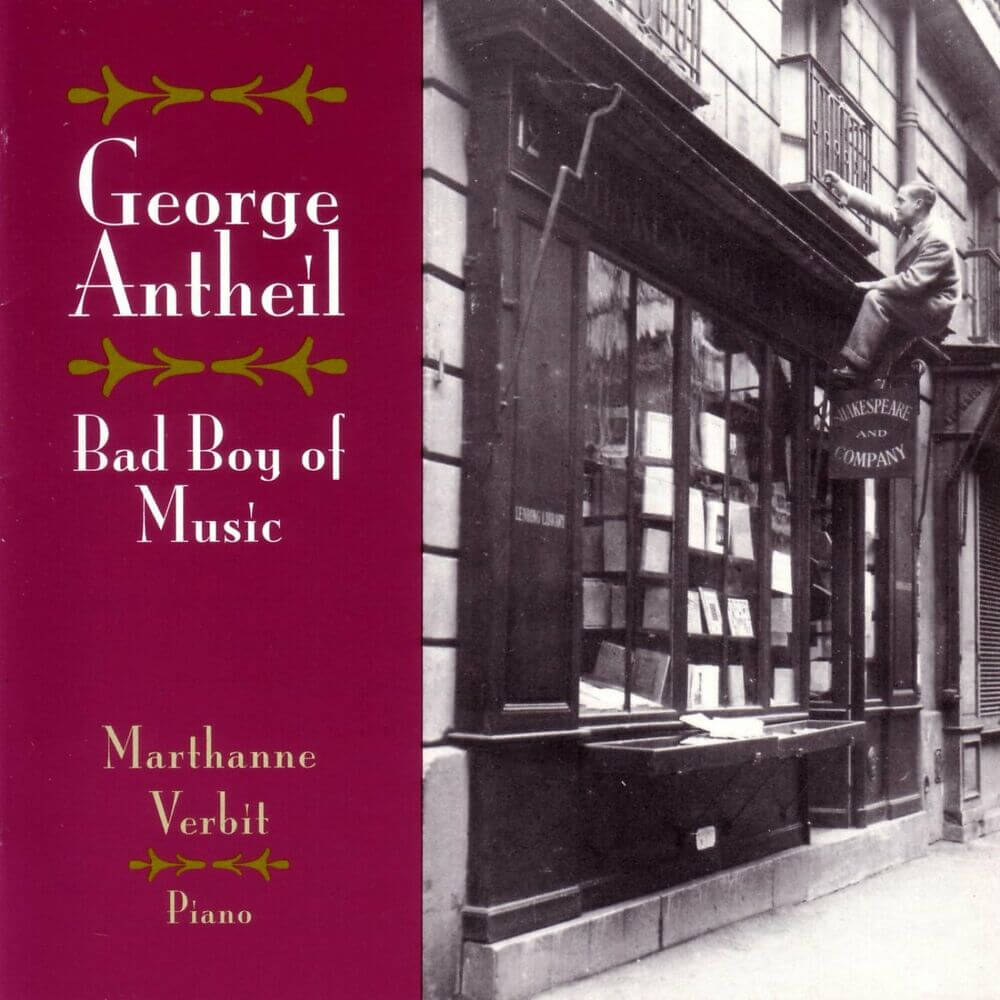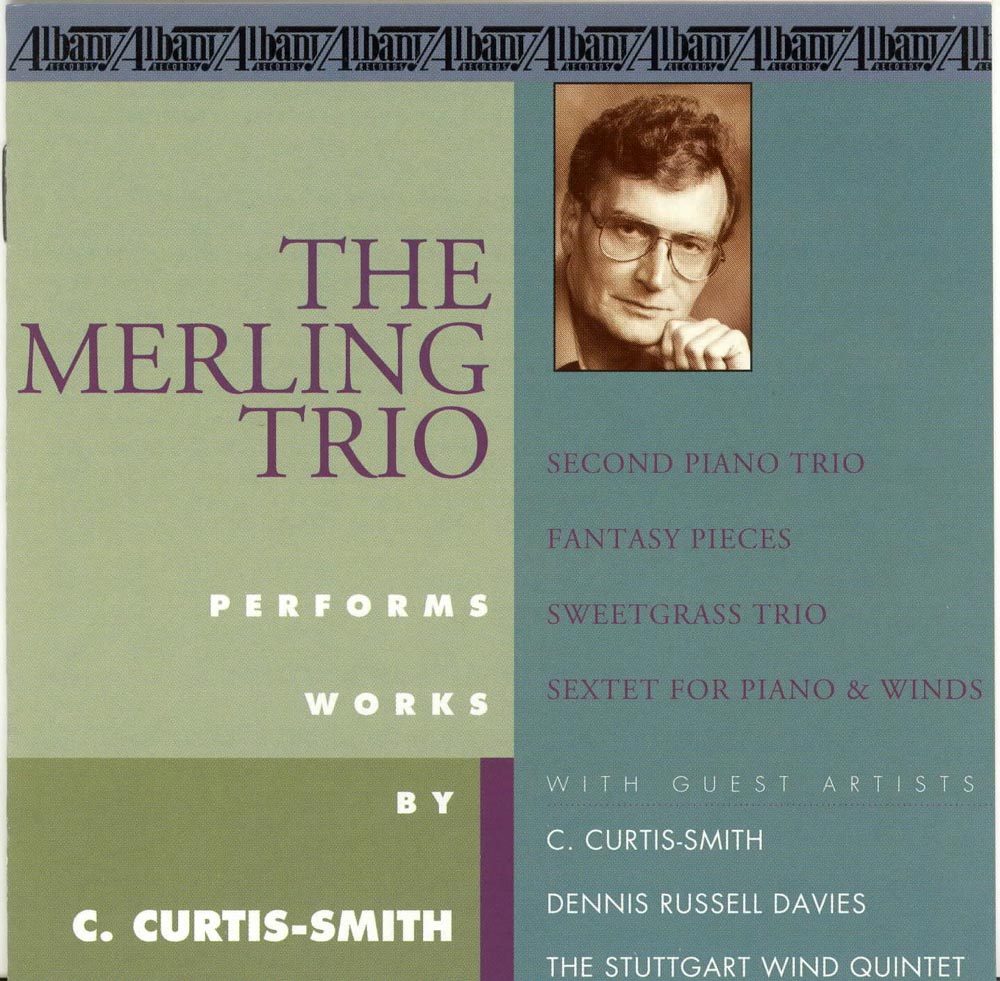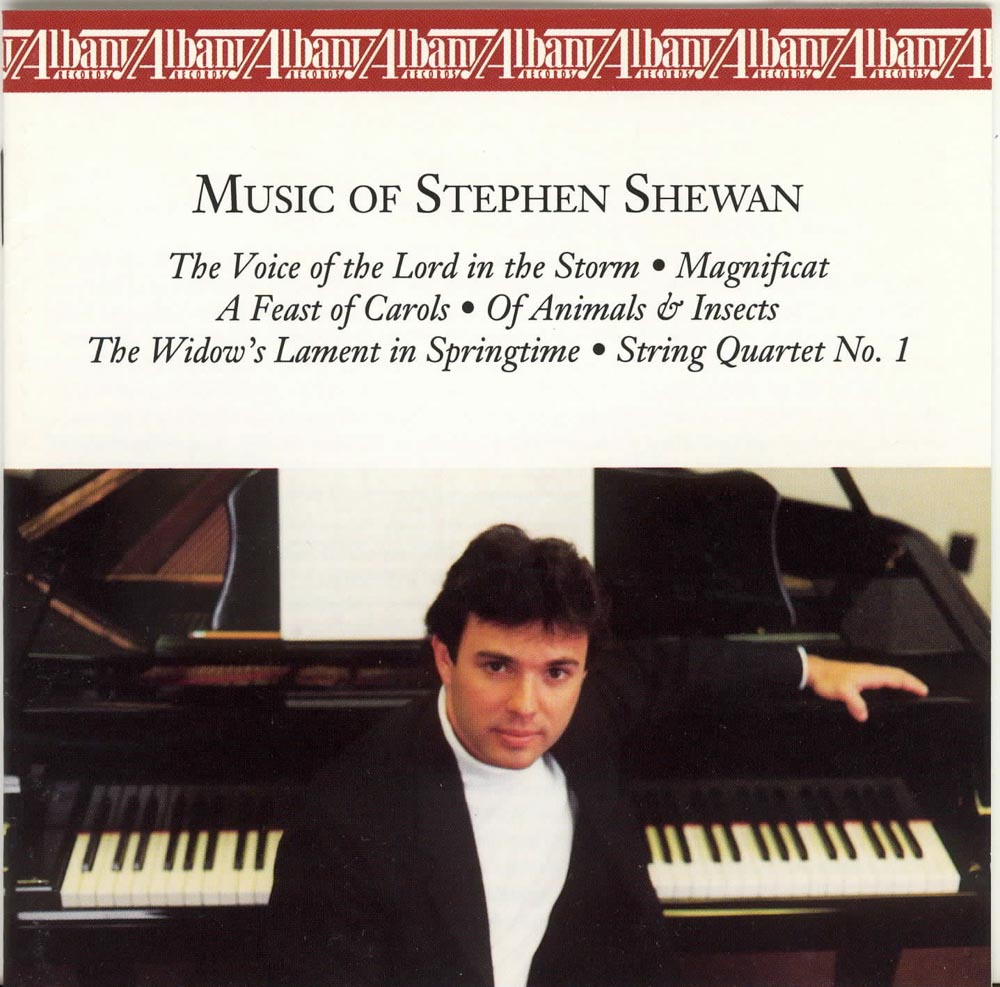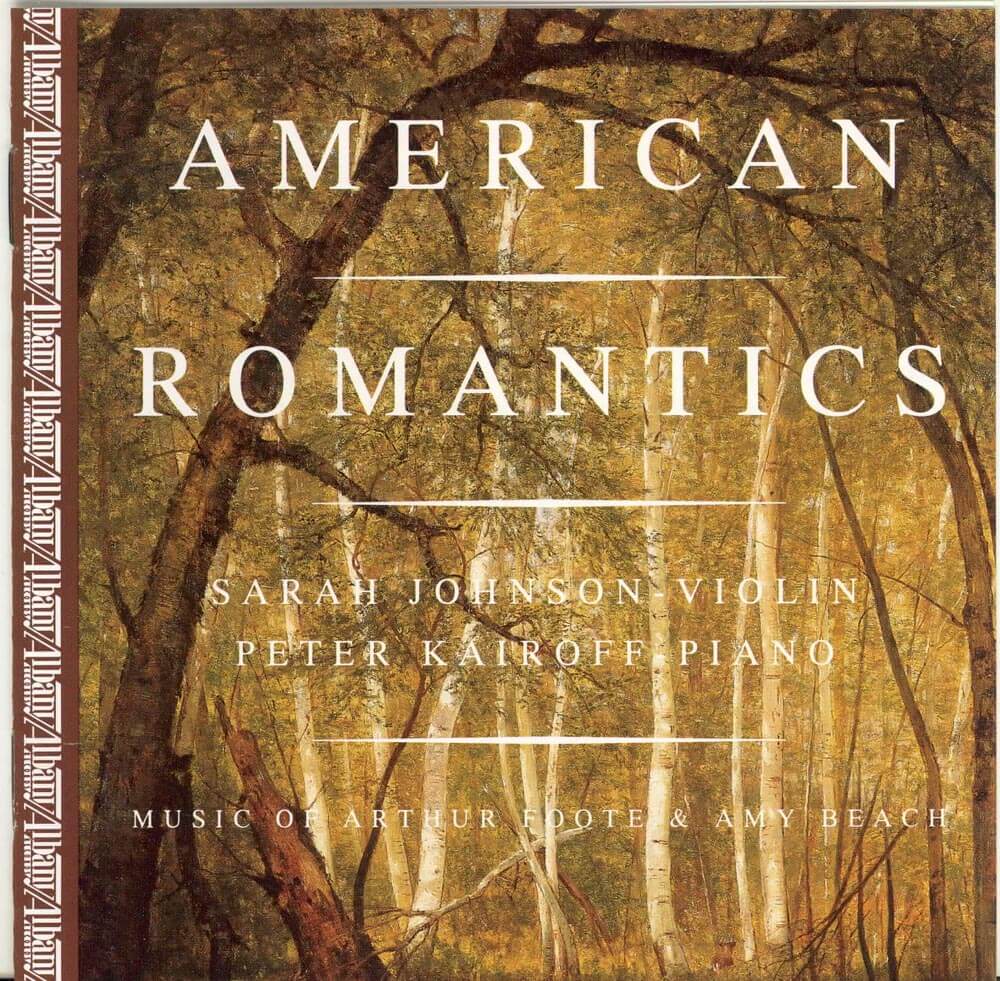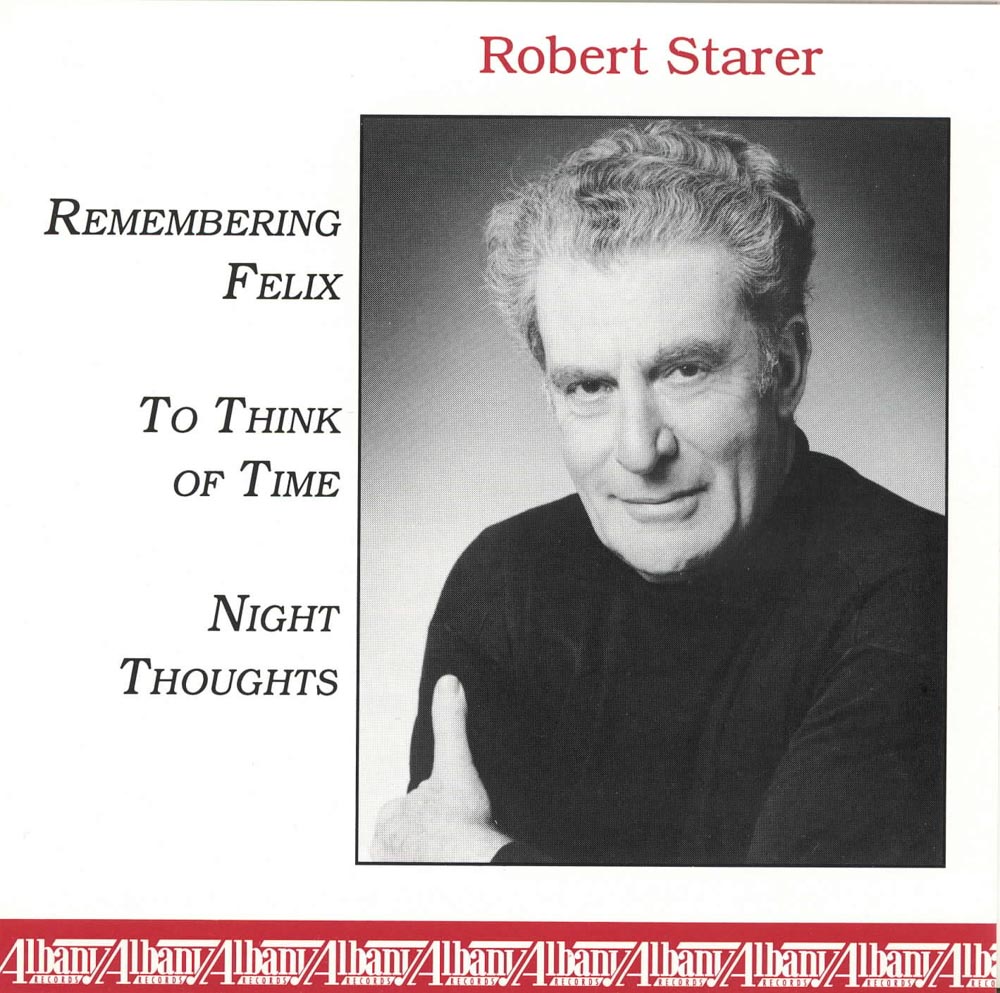Catalog #: TROY0108
Release Date: December 1, 1993ChoralThe twentieth-century American composers chosen for this program of choral music represent diverse styles and span almost 100 years; what they have in common is a sure sense for vocal writing, a preference for nontraditional but tonal harmony, and a delight in good poetry. The Composers: Halsey Stevens has taught at the University of California since 1948. He is an expert on Bartok and has composed a wealth of vocal and instrumental music. Charles Ives, New England's quirky, original insurance man-composer, began composing when he was 12 and held a job as church organist when he was only 14. Samuel Barber's gift for melody and the unabashed romanticism of some of his best-known works have made him one of the most popular mid-twentieth-century composers. Alan Hovhaness is an American composer of Armenian and Scottish descent. A prolific writer in a variety of forms, he is known for mystical works with an Eastern or Oriental flavor. Randall Thompson taught at the University of California at Berkley, Princeton, and Harvard, and was director of the Curtis Institute of Music. Ronald Perera studied with Leon Kirchner, Randall Thompson, and Mario Davidovsky. He has won awards and fellowships from the National Endowment for the Arts and ASCAP and teaches at Smith College. Matthew Harris, born in 1956, studied at Juilliard, Harvard, and New England Conservatory with Elliott Carter, Roger Sessions, Milton Babbitt, and Donald Martino. The recipient of many prizes and commissions, he is represented on record by Opus One. Irving Fine - teacher, conductor, respected and widely programmed composer of chamber, orchestral, and choral music - was educated at Harvard and later taught there and at Brandeis University. A contemporary of Leonard Bernstein and Aaron Copland, he died prematurely in 1962.
Catalog #: TROY0109
Release Date: March 1, 1994VocalThe works of women composers have been consistently overlooked by music historians. New emphasis is now being placed on "women in music" in music departments and women's studies programs across the country. The works of many women are beginning to emerge from the neglect of the past, and are becoming recognized as compositions worthy of study and performance. This is especially true in the art song genre which because of the small forces involved, allowed for the possibility of performance, even if only in the home. The songs of these three composers represent three different styles. Although all were born in the nineteenth century, their styles of composition are as distinct as the poetry that each chose to set. Clara Schumann composed in the tradition of the early Lieder composers, setting texts of German Romantic poets. Irene Wieniawska's (known as Poldowski) music, which includes a large number of settings of Paul Verlaine, is predominantly in the French impressionistic idiom. Amy Beach was an American who set various English-speaking poets from Shakespeare and Robert Burns to her own husband and herself.
Catalog #: TROY0111
Release Date: March 1, 1994OrchestralThis recording features the St. Stephens Chamber Orchestra performing works by North Carolina composers. Central to the recording is Hunter Johnson's Letter to the World. Hunter Johnson (b. 1906, Benson, North Carolina) composed extensively for piano, various chamber ensembles and orchestra. He is perhaps best known for his much-performed piano sonata and two ballets commissioned by Martha Graham, each of which has had hundreds of performances worldwide by the Graham Dance Company. Of the many artistic homages that have been paid to the spirit and poetry of Emily Dickinson, one of the finest tributes is Martha Graham and Hunter Johnson's collaboration, Letter to the World. Premiered in1940, this synthesis of dance, music and poetry soon became an established modern dance classic. The music (and dance) describe the legend of Emily Dickinson and the world of her imagination rather than the actual facts of her real life. Other works on the recording include Robert Ward's Concertino for Strings; Walter Ross's Mosaics; and Richard Rendleman's Concertino for Tenor Saxophone and Orchestra.
Catalog #: TROY0113
Release Date: February 1, 1994InstrumentalJoseph Fennimore has written songs, chamber music, orchestral works, and two one-act operas. His works have been performed by the Chicago Symphony, the Metropolitan Opera Studio, the New York City Ballet, at the Almeida Festival in London, and the Ravinia, Saratoga Performing Arts Center, and Tanglewood festivals, among others. His music has been performed nationwide, in Europe and Japan and broadcast worldwide on Spectrum, Nonesuch, and Albany Records. Born in New York City, Fennimore has been composing since childhood. He attended the Eastman and Juilliard Schools of Music, receiving degrees with honors from both. After a brief but distinguished career as a pianist, he founded and or its first five years directed the Hear America First Concert Series in New York City devoted to American music. The piano works on this disc include Armistice, a set of three pieces named for the intermission between the two world wars; Variations on a Theme of Beethoven; The Woolworth Man and The Hen's Snuffbox are stylized rags taking their titles from poems in Afro-American dialect by Herbert Woodward Martin. Foxtrot is a sonata in two movements. Blues conjures smoky bars, a haze of booze, hangovers and regrets for the sour love of one-night stands. An Old Soft Shoe is danced by a vaudeville tatterdemalion in top hat and tails, deftly bouncing his rubber cane, executing comic bits and pratfalls while proudly recalling better times long gone. Bernini's altarpiece of St. Teresa in ecstasy and St. Teresa's own writings about the experience give some notion of the central portion of the Second Romance: Calentura de Teresa. The first performance of Concerto Piccolo was at the Eastman School with Howard Hanson conducting.
Catalog #: TROY0114
Release Date: July 1, 1994Chamber"I composed The Dancing Bird in response to a need expressed by Francesca Vanasco for a number of original works for the unusual combination of flute, cello, bass and vibraphone that make up Alborada Latina, the chamber ensemble for Latin American Music," says Thad Wheeler. "The Dancing Bird was begun after I received a diagram of a Spanish Sevillanas from Basilio Georges. I used the 47 bar form as a framework for "Sevillanas Magicas," a Spanish sevillanas with an American accent. I hen went on to write "Bulerias," "Purple Night," and "Scherzo Merenque," integrating structural and developmental devices used by Beethoven with flamenco and Venezuelan rhythms and my own melodic and harmonic materials. The last piece composed for The Dancing Bird was "Glimmerglass." I wrote this piece while spending a great deal of time house-hunting in Cooperstown, New York in the late winter-early spring."
Catalog #: TROY0115
Release Date: May 1, 1994OrchestralWith this handful of works by composers with Oregon connections, the Portland Youth Philharmonic re-enters the lists of Northwest recording orchestras - among whom it was the first. In the '60s and '70s the Philharmonic recorded 10 works by eight composers on the CRI label - to good press and public reception. Six of those pieces had been commissioned by the Philharmonic under a grant from the Rockefeller Foundation. The rationale at the time was that young musicians could be the best proponents for new music except that often it was beyond their reach technically. To meet this problem, the Philharmonic invited composers to produce works that were a little less difficult but still true to their own style. This recording was made to celebrate the Philharmonic's 70th Anniversary and continue the commitment to contemporary music. Composers whose works receive world premiere recordings on this disc are Salvador Brotons, Kevin Walczyk, John Van Buren, Bryan Johanson and Jacob Avshalomov.
Catalog #: TROY0117
Release Date: July 1, 1994InstrumentalGeorge Walker was born in Washington, DC on June 27, 1922 of West Indian-American parentage. He graduated from high school at the age of 14, attended Oberlin College and the Curtis Institute of Music where he studied piano with Rudolf Serkin and composition with Rosario Scalero. His auspicious debut at Town Hall in 1945 was described in the New York Times as "notable...an authentic talent of marked individuality and fine musical insight...a rare combination of elegance and sincerity...an understanding, a technical competence and a sensitiveness rarely heard at debut recitals." Walker obtained his Doctor of Musical Arts Degree from Eastman and went on to study in France with Nadia Boulanger on Fulbright and John Hay Whitney Fellowships. His compositions have been played by virtually every major orchestra and chamber orchestra in the United States. This recording uniquely showcases the pianist as composer-composer as pianist as Walker performs his Sonata No. 1.
Catalog #: TROY0118
Release Date: August 1, 1994VocalThe centerpiece of this song collection, Dominick Argento's cycle From the Diary of Virginia Woolf, was awarded the 1974 Pulitzer Prize. A setting of eight excerpts from Woolf's journal, this ambitious and complex work offers in each song a glimpse into the writer's voyage of self-discovery as she observes her literary, emotional, social, and creative life. Beginning with the opening entry from 1919, the songs traverse a variety of experiences past her prescient 1940 thought, "I can't conceive that there will be a 27th June 1941," to the final entry, just before her suicide in March of 1941. In the composer's words, "I think I write music as a way of learning who I am, what I really think, what I truly believe. My own career has been an exercise in self-discovery. The strong concentration that these texts focus on self-knowledge may have prompted me to write my most moving music. Not a week goes by that I do not receive a letter from a singer or a listener saying how moved they were by a performance of the Virginia Woolf Diary." A singer who loves song literature, mezzo-soprano Mary Ann Hart has delighted audiences and critics alike with her performances. Out of sight (but still in earshot) Miss Hart did voice characterizations for the Disney animated film Beauty and the Beast and has recorded for the Arabesque, Chandos, Nonesuch and Albany Records labels.
Catalog #: TROY0119
Release Date: May 1, 1994VocalStephen Foster was a figure of contradictions: the composer was much loved by the public, but was at the same time a thoughtless husband and father. While his songs reflect a real intimacy with the antebellum South, Foster was not from the South and only once traveled into the region. Was he merely an "artless genius" who knew little about music or a well-studied craftsman? Foster was America's earliest popular and successful songwriter. Yet he died alone and penniless - not in the South, not even at his family home in Pittsburgh - but at Bellevue Hospital in New York City. While Stephen Foster's personal and business habits may have been chaotic, research has shown the man to have been a dedicated musician. Despite early biographers' description of an unschooled lightweight, the fact is that Foster carefully studied the American minstrel tradition and knew German Lieder and Irish-Scottish song literature. Foster's songs are often set for multiple voices, diverse instruments and even a cappella chorus. It is the intention of this recording to present the wealth of Foster's music - but not with a lone vocalist and accompanist from a single musical vantage point. Instead, both "classical" and "folk" musicians have gathered to sing and play on dulcimers, fiddles, accordions, pennywhistles and old pianos. Despite occasional wheezing, crunching and crackling, we hope these antique instruments - and our wonderful contemporary vocalists - will charm the listener and capture something of Stephen Foster's diverse genius that one might have experienced on a little 19th century concert stage, a street corner or on a back porch.
Catalog #: TROY0124-25
Release Date: September 1, 1994ChoralHoratio Parker was born in Auburndale, Massachusetts on September 15, 1863. Although today he is remembered primarily as the teacher of Charles Ives, his music was well-known nationwide and in England during his day. He also had an excellent reputation as an organist-choirmaster, conductor, and teacher-administrator. He began the study of music at the age of 14 with piano and organ lessons from his mother, who was also librettist for some of his mature choral works. He studied composition with George Chadwick and attended the Hochschule fÜr Musik in Munich where he studied with Josef Rheinberger. Parker became Dean of the School of Music at Yale University and conductor of the New Haven Symphony in 1894, positions he retained until his death in 1919. Hora Novissima, written in 1893, remains Parker's most inspired, popular, and best work. The venerable critic Philip Hale summed up how Americans were to feel about their native oratorio for the next 25 years, as choral societies gave it performance after performance throughout the country. He said: "A future historian will point back to a young man [who] appeared with a choral work of long breath that showed not only a mastery of the technique of composition, but spontaneous, flowing, and warmly colored melody, a keen sense of values in rhythm and in instrumentation, and the imagination of the born, inspired poet." Hora Novissima is a contemplative rather than a dramatic oratorio. It is a reflection on the Christian heritage through the words of a medieval monk, Bernard of Cluny, from whose monumental poem, De Contemptu Mundi, Hora is taken.
Catalog #: TROY0126
Release Date: October 1, 1994OrchestralRobert Ward provides the following notes: "The Concerto for Violin draws on many strands of my musical background. The first movement is a chaconne based on a 12-tone theme. It is made up of some 27 variations which sometimes demand pyrotechnical display and at others call for intense lyricism or lighthearted playfulness. The slow movement is a "blues" which reflects my war years when I led a swing band as part of my duties as an Army bandleader. The movement just trails off until it is rather rudely interrupted by the Finale. Here again the music is out of my jazz experience and the earlier influence of Gershwin, Copland, and Harris. The movement is nonetheless in a straightforward sonata form within which a fugue is included. The Suite from The Scarlet Letter is a ballet in seven scenes based on the novel by Nathaniel Hawthorne. Hawthorne's magnificent story proved to be an endless source of inspiration and a great challenge. In planning the work the choreographer and I have tried to accomplish in the "story ballet" the same close interweaving of plot and music that prevails in my opera, "The Crucible," based on the play by Arthur Miller. Each scene involves a principal dramatic climax in Hawthorne's novel and musical ideas are specifically associated with characters or elements of the story."
Catalog #: TROY0127
Release Date: October 1, 1994VocalDuring his lifetime Purcell was seen as a grand, almost super-human figure who was entrusted to compose the large, ceremonial pieces for major court and public events: coronation anthems, royal welcome and birthday songs, the lavish semi-operas for the London stage, St. Cecilia Day odes, and so forth. But there was another side of Purcell that is revealed by this recording: the provider of vocal and instrumental music for private, domestic consumption - music of the highest quality, originally performed by professionals, but collected and published for a mainly amateur market. Sally Sanford, Brent Wissick and Raymond Erickson, the artists on this recording, first met in the late 1970s at the Aston Magna Academy, a cross-disciplinary program in seventeenth-and eighteenth-century culture which brings together each summer scholars and baroque music specialists to consider music in relation to the other arts. They have collaborated on many projects since that time. This recording is an outgrowth of the 1987 Aston Magna Academy, "The Culture of Restoration England."
Catalog #: TROY0128
Release Date: November 1, 1994JazzWhat you will hear on this disc is not just the usual energetic, celebratory retrospective of traditional jazz we have come to expect from Narvin Kimball and his friends from the Preservation Hall Jazz Band. This is also, and most importantly, the feature debut of Narvin Kimball, an 85 year-old phenomenon on banjo and voice, who graciously guides us through some highlights of the American songbook. Converted from his high school ukulele to the banjo, Kimball began his professional career paying his dues and refining his craft aboard the now legendary paddle-wheel steamers - "showboats" really - that traveled the Mississippi from New Orleans to St. Paul for the Streckfus riverboat line. "If you had an opportunity to play on the steamers it was like having a post-graduate degree in music," Narvin recounts. This brings us to his teacher, the formidable bandleader, disciplinarian and calliope player with the wonderful name, Fate Marable. The under appreciated and underrecorded Marable was apparently a genius at transforming talented but untutored, and sometimes ungovernable, New Orleans' musicians into disciplined players who were taught not only to read music but were also forced to learn the varied repertoire needed to please the varied audiences - both white and black - that were drawn to this itinerant music. This recording is much more the music of the river than of the city. It's a sampler of musical Americana, jazz-inflected and - make no mistake - New Orleans style.
Catalog #: TROY0129
Release Date: September 1, 1994ChamberHoward Hanson (1896-1981) was a distinguished American composer, educator and preeminent advocate of American music. He belonged to that select group of American composers born in the last decade of the nineteenth century - Walter Piston, Roger Sessions, Randall Thompson, Roy Harris, Virgil Thomson and Aaron Copland - who personified the emergence of American classical music as a distinctly national, as opposed to European, cultural force to be taken seriously. He was the leading practitioner of American musical Romanticism, much in the tradition of Jean Sibelius, Edvard Grieg and Carl Nielsen in Scandinavia. Hanson dedicated his professional life to the encouragement, creation and preservation of beauty in music, believing it to be an art form possessing unique power to ennoble both performer and listener, and, by extension, mankind. Throughout his career, Hanson never departed from his cherished ideals of beauty, clarity and simplicity of utterance and his conviction that musicians and audiences would respond openly to each other on this basis. He abhorred ugliness in music, dismissed as worthless intellectual abstraction for its own sake, and fought what he perceived to be the growing alienation between composer and audience. A lifetime of composition reflects this conviction, as did his lengthy tenure as a teacher and administrator.
Catalog #: TROY0130
Release Date: January 1, 1995ChamberOctagon is the new music ensemble of the University of California. It offers an important opportunity to young composers and performers in the UC system. The group creates a pre-professional opportunity to explore a large body of new literature from composers at the University of California. The works chosen for performances represent a broad spectrum of styles from the most experimental to the most traditional. The ensemble tours annually throughout the University of California system and elsewhere.
Catalog #: TROY0133
Release Date: January 1, 1995ChamberOctagon is the new music ensemble of the University of California. It offers an important opportunity to young composers and performers in the UC system. The group creates a pre-professional opportunity to explore a large body of new literature from composers at the University of California. The works chosen for performances represent a broad spectrum of styles from the most experimental to the most traditional. The ensemble tours annually throughout the University of California system and elsewhere.
Catalog #: TROY0134
Release Date: September 1, 1994ChamberMichael Horvit (b. 1932) is Professor of Theory and Composition at the University of Houston School of Music, where he has chaired that department since 1967. For 25 years he served as Director of Music at Temple Emanu El in Houston. During his studies at Yale, Harvard, Tanglewood and Boston University, his composition teachers included Aaron Copland, Lukas Foss, Walter Piston, Quincy Porter and Gardner Read. His works range from solo instrument and vocal works to large symphonic compositions, choral cantatas and operas, many written specifically for the Jewish liturgy. Among the numerous ensembles and organizations that have commissioned his works are the Houston ballet, the Houston Symphony, the National Symphony of Mexico, the Chicago Chamber Brass, and the Esterhazy String Quartet. He is the recipient of awards from organizations that include BMI, ASCAP, the Martha Baird Rockefeller Foundation, the National Endowment for the Arts, the Fridge Trust, and the University of Houston.
Catalog #: TROY0135
Release Date: December 1, 1994InstrumentalThe two piano sonatas contained on this recording are among the finest examples of piano writing by two leading composers of the so-called Leningrad School, a group of Soviet composers raised and trained in Leningrad who came to prominence in the generation following Shostakovich. The fame of this group, which includes Sergei Slonimsky, Boris Tishchenko, and Andrei Petrov, springs from their innovative and individual approaches to musical composition. Sergei Mikhailovich Slonimsky was born in Leningrad on August 12, 1932. His father was a prominent Soviet writer Mikhail Slonimsky, and his uncle the Russian-American conductor and musical lexicographer Nicolas Slonimsky. Slonimsky received his training and served on the faculty at the Leningrad Conservatory, teaching composition and music theory. Boris Ivanovich Tishchenko was also born in Leningrad on March 23, 1939. Like Slonimsky, Tishchenko attended the Leningrad Conservatory. He pursued postgraduate work with Dmitri Shostakovich and became a close friend and perhaps, the most gifted pupil of the older composer. The works on this recording are performed by the Russian-American pianist Sedmara Zakarian Rutstein. She attended the Special Music School for gifted Children in Leningrad and later the Leningrad Conservatory. After completing her graduate and post-graduate studies, she was invited to join the faculty, a position she held until she departed for the United States in 1974.
Catalog #: TROY0136
Release Date: October 1, 1994ChamberGeorge Walker, the Pulitzer Prize winning composer, began to study composition seriously after graduating from Oberlin College. After having been accepted at the Curtis Institute of Music in Philadelphia to study piano with Rudolf Serkin, he was accepted into the composition class of Sosario Scalero, teacher of Samuel Barber and Gian-Carlo Menotti. He completed his first string quartet before embarking on a career as a concert pianist. In 1956 he became the first black recipient of the Doctor of Musical Arts Degree from the Eastman School of Music. Although his degree was in piano (he never studied composition at the Eastman School), he composed his Concerto for Trombone and Orchestra, Second Piano Sonata, and Sonata for Cello and Piano while residing in Rochester, New York. In 1957, as a Fulbright Fellow in piano, he continued to compose under the guidance of Nadia Boulanger in Paris. Returning to the United States in 1958, he began to amass a catalog of more than 70 published works that have been performed by renowned ensembles and conductors throughout the United States, Europe, and Asia. The composition dates of the works on this recording range in date from the sixties to the mid-eighties and present a variety of forces. There is a work for organ, Variations for Orchestra and a cantata for soloists, boys choir and chamber orchestra. The cantata is performed by the Boys Choir of Harlem on this recording.
Catalog #: TROY0138
Release Date: December 1, 1994ChamberAmerican composer Benjamin Lees was born on January 8, 1924 to Russian parents. Shortly after his birth, the family moved to San Francisco where he began to study piano. After military service in World War II, Mr. Lees began the study of composition at the University of Southern California. He soon came to the attention of the legendary American composer George Antheil, the famous "Bad Boy" of music. Lees left the university and began studies with Antheil in advanced composition and orchestration that lasted almost five years. The recipient of numerous awards and commissions, Lees's works have enjoyed numerous performances by such legendary conductors as George Szell, Erich Leinsdorf, Eugene Ormandy and Zubin Mehta, among others. Mr. Lees's music is unmistakably American in its rhythmic energy and directness. But it is markedly different from what audiences have come to identify as American music as associated with Aaron Copland and Leonard Bernstein. The influence of his eight-year stay in Europe, of the Surrealist ideas to which Mr. Lees was exposed there, the avoidance of folk material, a keen appreciation of the visual arts, an ascorbic wit, and an unerring sense of the true and expressive combine to make his a singular voice in contemporary music. His craft is formidable, but even more so is his awareness of the essence of music, and it is this awareness that is so appreciated by audiences.
Catalog #: TROY0139
Release Date: December 1, 1994ChamberDonald Wheelock is a native New Englander and has taught at Smith College in Northampton, Massachusetts since 1974 where he is currently Professor of Music. He studied composition with Edgar Curtis and Kenneth Leighton prior to receiving his Master of Music degree from the Yale University School of Music, where he was a student of composer Yehudi Wyner. A frequent guest at the MacDowell Colony in New Hampshire, he has twice received a Guggenheim Fellowship. In addition to the string quartets, Wheelock has written many chamber ensemble works, solo instrumental compositions, and numerous vocal, choral and orchestral works. The Ciompi Quartet has been in residence at Duke University since 1965. The current members of the quartet are professors in the Department of Music at Duke, where they perform, teach strings and chamber music, and bring the living tradition of string quartet playing into the University as well as to many cities in the region. In addition to their performance of the masterworks of the Classical and Romantic periods, the Ciompi Quartet has a special interest in commissioning and performing music by contemporary composers.
Catalog #: TROY0140
Release Date: December 1, 1994OrganThis compact disc features premiere recordings of new music for organ by William Albright, Herbert Bielawa and Pamela Decker. William Albright is well known for his keyboard works, though he has produced works for every medium, several of which involve electronic, visual and theatrical elements. He has been the recipient of many commissions and awards and was professor of music and chair of the composition department at the University of Michigan in Ann Arbor. Herbert Bielawa earned his degree in piano and composition at the University of Illinois and the University of Southern California. He has been a member of the faculties of Bethany College and San Francisco State University where he founded the Pro Music Nova and created the electronic music studio and courses for the computer music major. He has written music for instrumental ensembles, piano, harpsichord, pipe organ, choir, electronics, chamber opera, band and orchestra. Pamela Decker holds a Doctor of Musical Arts degree from Stanford University and the Fulbright Certificate for successful completion of study as a Fulbright Scholar in West Germany. She has won prizes in national and international competitions for organ playing and for composition. Her compositions for organ have been performed in many countries by American, Canadian, and European organists.
Catalog #: TROY0141
Release Date: December 1, 1994ChamberConsidered a magnificent instrument for chamber music since the 18th century, the viola nevertheless had difficulty establishing itself as a solo instrument. Its rich, sandy tone and middle range, indeed the very qualities that make it an ideal chamber music partner, historically deterred composers from placing the viola in the spotlight. It has only been in the 20th century that the viola has come into its own as a solo instrument. This change has been wrought by contemporary composers searching for new timbres to explore, as well as by exceptional performs whose commissions and performances inspired dozens of composers to view the viola as a viable solo instrument. This trend has been especially well-developed in the United States and the four works for viola and piano on this disc exemplify the expressive range of which the viola is capable. Lawrence Wheeler is a professor at the University of Houston School of Music. Principal Violist of the Houston Grand Opera Orchestra, he is former Principal Violist of the Pittsburgh Symphony and has been Co-Principal of the Minnesota Orchestra and guest Principal with the Dallas and Houston Symphonies. A graduate of Juilliard, his teachers have included Walter Trampler and Leonard Mogill.
Catalog #: TROY0143
Release Date: January 1, 1995OrchestralThe fine American conductor David Amos presents three CD world premieres of American music for chamber orchestra. The composers represented in this new disc are all from the conservative mainstream of America's music; their music is tonal and accessible. Morton Gould, the 1995 winner of one of the Kennedy Center Honors, is represented on a number of other Albany discs.
Catalog #: TROY0144
Release Date: February 1, 1995ChamberThis is the second volume in the Albany Records' series devoted to the music of Stephen Dankner (see TROY067 - Songs of Bygone Days). Dankner's music is highly accessible and very well crafted. He studied with Roger Sessions and Vincent Persichetti. Currently he is the chairman of the Music Department at the New Orleans Center for the Creative Arts, which is an arts preparatory high school. He is also on the faculty of Loyola University's College of Music where he teaches composition and electronic-computer music.
Catalog #: TROY0145
Release Date: March 1, 1995ChamberIn her program notes for this delightful new album the flutist Sue Ann Kahn writes: "One of the flutist's most precious legacies is the treasury of short pieces by Jacques Ibert. Gems from Ibert's most fertile years, these works charm, touch and amuse player and listener alike. As a young flutist, I made the acquaintance of Divertissment and the Wind Quinette, Trois Pieces Breve, savoring particularly the mischief in the first piece and the lightheartedness of the second. I devoured recordings of the Concerto and of Entr'acte by the great flutist Julius Baker, and I sensed a true affinity between Ibert's exotic but playful style and the sensuous color, melodic tenderness, and sparkle idiomatic to my chosen instrument. After several decades of performing Steles Orientees, Piece, Entr'acte, and Jeux, I found myself as enamored of Ibert's music as ever and, spurred by the hundredth anniversary of his birth, decided to gather his flute chamber works onto one disc. Jacques Around the Clock presents pieces as different as noon and night, from the whirlwind Entr'acte to the quiescent Aria. Unmistakably Spanish in flavor, the popular Entr'acte, inspired by Segovia's playing, begins the disc in its original flute and guitar scoring and returns at the end in the version for flute and harp."
Catalog #: TROY0146
Release Date: January 1, 1995InstrumentalAs Joseph Fennimore writes in his notes for this very well documented CD, "Ms. Verbit is the first pianist to have undertaken the Olympian task of deciphering and recording these early pieces of Antheil. She uniquely has the requisite tenacity, skill and resources for the task. Dedication is the word. Her researches have been thorough, her relationship with Antheil becoming deeply personal even though they never met. Everything about him that could be known, she has learnt. When she refers to Antheil as "George," one has the feeling he asked her to call him that."
Catalog #: TROY0147
Release Date: February 1, 1995InstrumentalThis disc is another volume in the series of complete keyboard works performed by the acclaimed fortepianist Lola Odiaga. See information for TROY045, TROY062 and TROY094.
Catalog #: TROY0148
Release Date: March 1, 1995ChamberCurtis O.B. Curtis-Smith was born in Walla Walla, Washington in 1941. His teachers included David Burge, Alan Stout, Ken Gaburo, and Bruno Maderna. He has taught composition at the University of Michigan and is currently Professor of Music at Western Michigan University in Kalamazoo. In 1994, Leon Fleisher performed his Piano Concerto for the Left Hand and Orchestra with Neemi Jarvi and the Detroit Symphony Orchestra. Dennis Russell Davies and the American Composers Orchestra have performed his Great American Symphony (GAS!) This disc presents a fine cross section of Mr. Curtis-Smith's chamber music. Note that Dennis Russell Davies is the piano soloist in the Sextet for Piano and Winds, a work that was written for, and is dedicated to him.
Catalog #: TROY0149
Release Date: April 1, 1995ChoralThis is a recording devoted exclusively to the music of the young American composer Stephen Shewan. Shewan was born in Warsaw, New York in 1962. He is a graduate of Robert Wesleyan College and Ithaca College. He studied composition with Samuel Adler at the Eastman School of Music while pursuing his doctorate in music education. His is a fresh voice which Albany Records is pleased to bring to your attention. Shewan composes in an accessible idiom that should appeal to a broad audience.
Catalog #: TROY0150
Release Date: February 1, 1995ChamberOne of the major commitments of Albany Records is to the music of America. Within this field one of our very specialized areas of interest is unknown music from our country's Romantic Era. This new recording of music by Arthur Foote (1853-1937) and Amy Beach (1867-1944) is a perfect example of what we are all about; two fine young American performers playing music which is so very deserving of being heard, especially by larger audiences. Both Foote and Beach have composed music that is very well written and immediately appealing. Violinist Sarah Johnson also appears on Albany Records performing Robert Ward's Violin Concerto with the Winston-Salem Symphony (see TROY126).
Catalog #: TROY0151
Release Date: March 1, 1995VocalRobert Starer was born in Vienna in 1924. He entered the State Academy at age 13. Soon after Hitler's annexation of Austria in 1938, he went to Jerusalem and continued his studies at the Palestine Conservatory. During World War II, he served with the British Royal Air Force. In 1947, he came to New York City for post-graduate study at Juilliard. He also studied with Aaron Copland at Tanglewood in 1948. In 1957, he became an American citizen. He taught at Juilliard from 1949 to 1974 and at Brooklyn College and the Graduate Center of the City University of New York from 1963-1991. In 1994, he was elected a member of the American Academy of Arts and Letters. His book, Continuo: A Life in Music was published by Random House in 1987. His complete works for solo piano have recently been published in one volume. In 1986, Itzhak Perlman recorded his Violin Concerto with the Boston Symphony Orchestra under Seiji Ozawa. This disc offers a selection of Mr. Starer's chamber works for voice and various instruments.
Catalog

©2024 Albany Records. All rights reserved. | Privacy Policy | Website by PARMA Creative.
